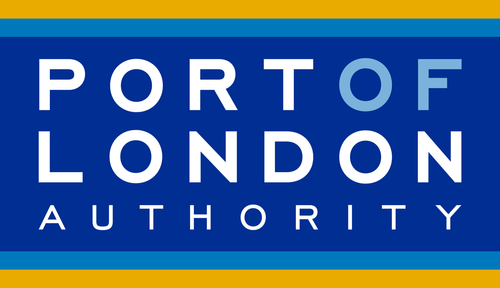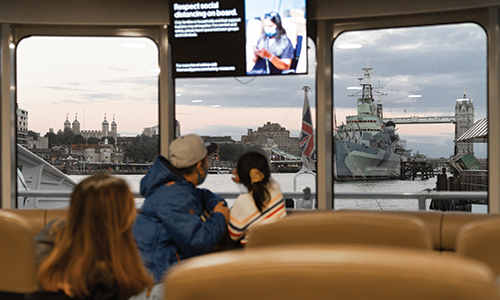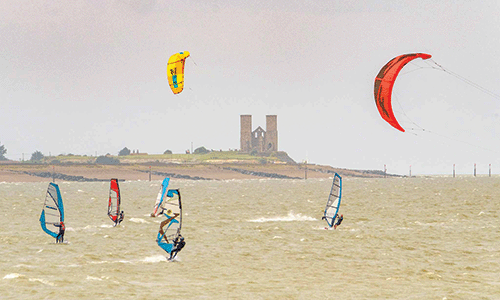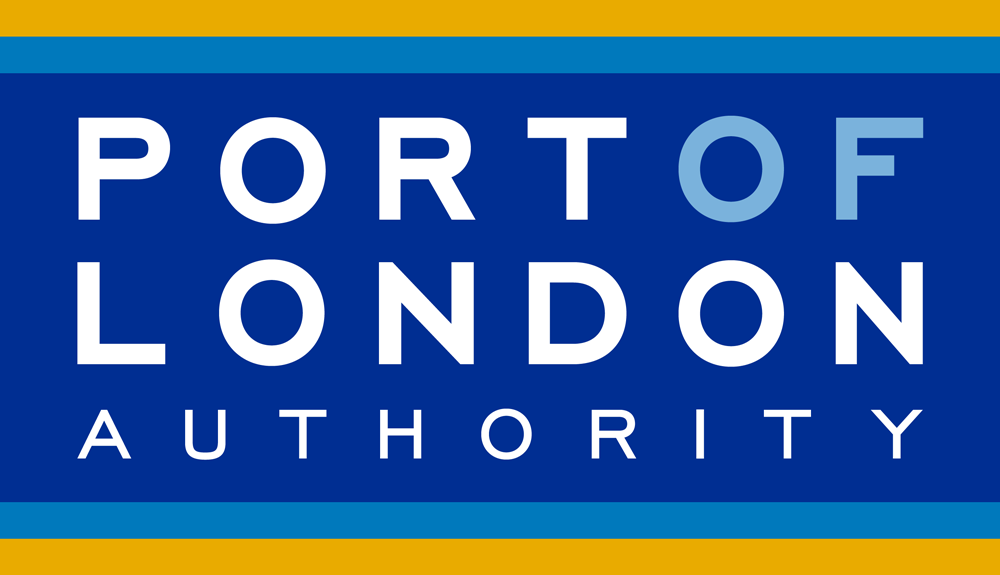Live Tides
NOTICES TO MARINERS
Charts & Surveys
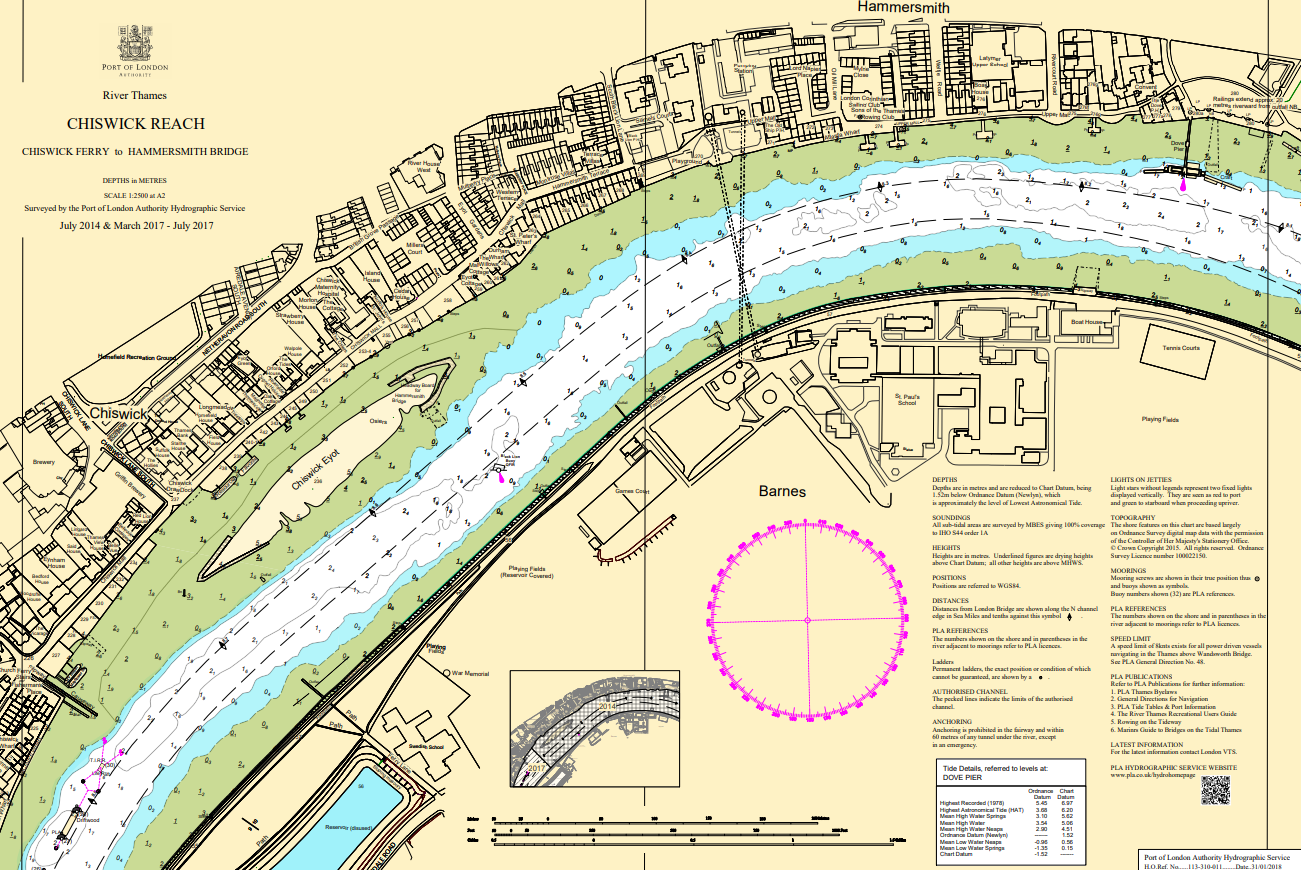
Incident reporting
Life-threatening emergencies on the river:
Call 999 and ask for the Coastguard
For near miss, safety observations and incident reporting click below
Annual Report and Accounts 2021
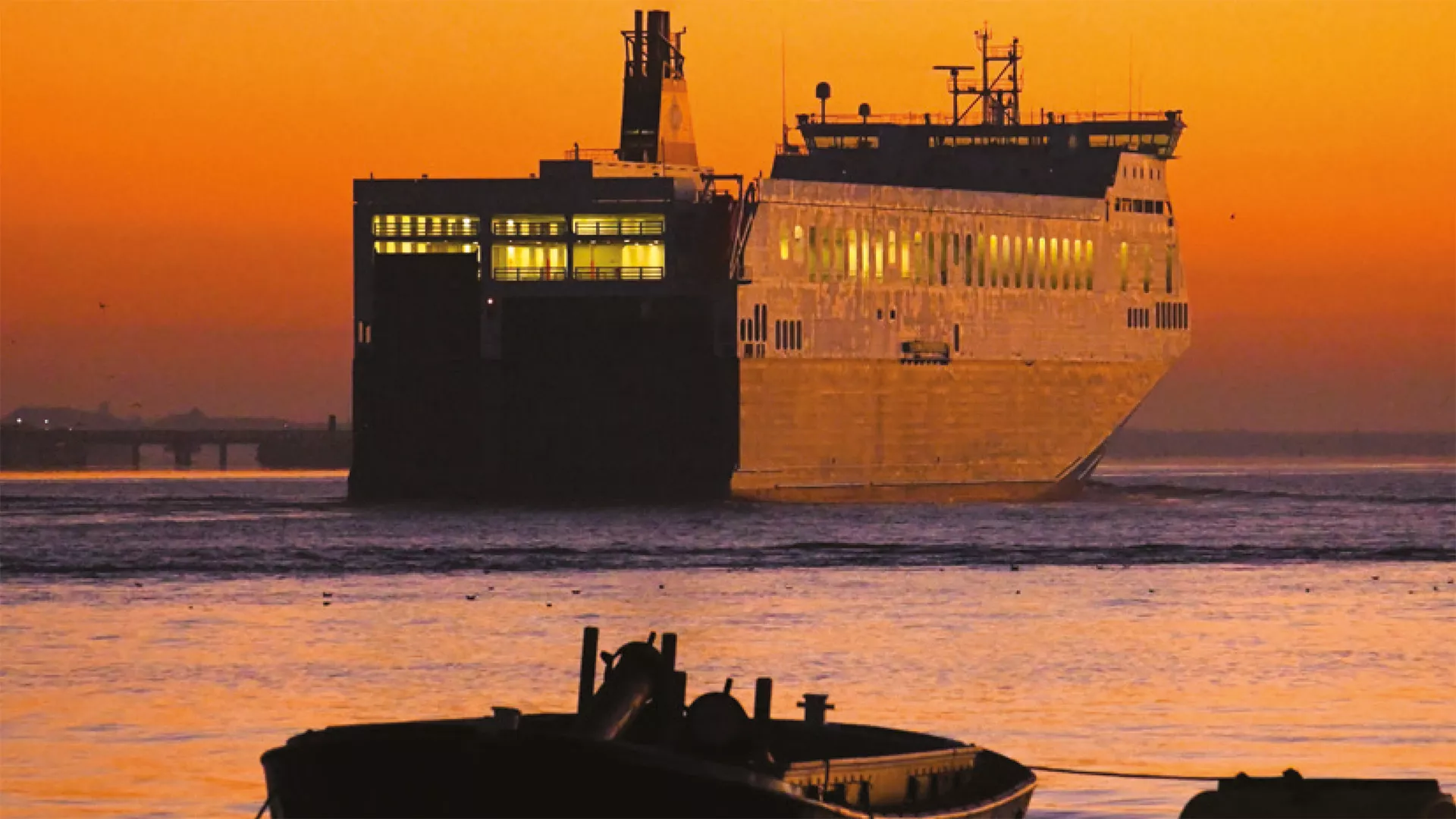
OVERVIEW
ABOUT THE TIDAL THAMES
The tidal Thames is 95 miles of river from Teddington Lock, through central London, out to the North Sea. The river is home to the UK’s biggest port, the busiest inland waterway for freight and passengers and a growing centre for sporting activity.
The tidal Thames is also a thriving habitat, home to 125 different species of fish, 3,000 seals and more than 300,000 overwintering birds.
Economically, the port plays a key role as part of supply chains serving the UK markets of London, the south east and beyond. Over 48,000 jobs depend on the port, which generates more than £4.5 billion in economic value added annually. In addition, there are over 100,000 jobs related to the river as an amenity and economic activity generating a value added of over £2 billion.
ABOUT THE PLA
At the Port of London Authority we are the Custodians of the tidal Thames. We hold the river in trust, working to hand it on in a better condition to future generations and realising the goals of the Thames Vision.
Our strategy to achieve this is centred on key themes to:
PROTECT Targeting Zero Harm and improved sustainability
IMPROVE Running efficient operations and investing to support growing river use
PROMOTE Leading the Thames Vision to unlock the potential of the Thames
ABOUT THE THAMES VISION
The Thames Vision is the long-term development framework for the river. Thames Vision 2035 was launched in mid-2016, targeting greater river use, alongside an improving environment. Through 2020 and 2021 we commissioned a series of studies, surveys and consulted stakeholders as part of a review of the Vision, in light of the new challenges and opportunities that have emerged in the intervening years.
he Vision is being delivered in partnership by the PLA and stakeholders; key elements of the Vision are reflected in the London Plan and the Mayor of London’s environment and transport strategies.
We are currently consulting on the draft Thames Vision 2050, that emerged from this work. It is themed around: Trading Thames, Destination Thames and Natural Thames. Across these themes are priorities for action covering: safety, the Net Zero transition, resilience, technological change and access & inclusion. The consultation will conclude at the end of April 2022, with the final document published once feedback has been reviewed.
For the latest on Thames Vision 2050, visit: www.pla.co.uk/ThamesVision
STRATEGIC REPORT
Adapting to new technology and responding to climate change are clear priorities for the future of the river as we start to build back from the pandemic.
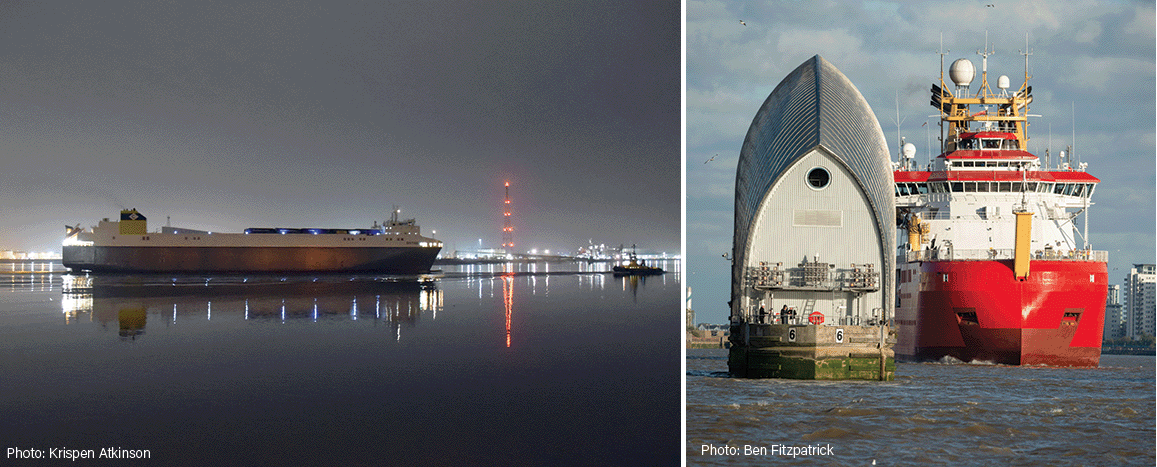
CHAIRMAN'S STATEMENT
Christopher Rodrigues CBE 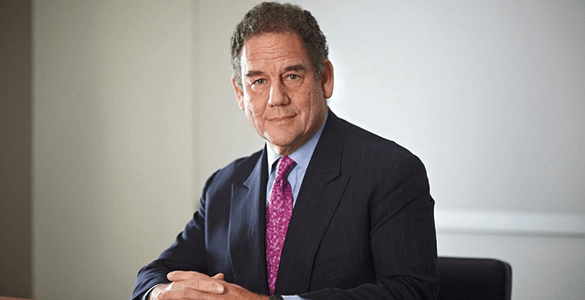 In October 2021, we welcomed the new British Antarctic Survey vessel, the RRS Sir David Attenborough on her first Thames call. It was a highlight of the year, and also a harbinger of the future. A high-tech vessel, developed to better understand the drivers of climate change, visiting the UK’s biggest port.
In October 2021, we welcomed the new British Antarctic Survey vessel, the RRS Sir David Attenborough on her first Thames call. It was a highlight of the year, and also a harbinger of the future. A high-tech vessel, developed to better understand the drivers of climate change, visiting the UK’s biggest port.
As custodians of the Tidal Thames, the PLA is playing a leadership role in mapping out the Port’s route to a sustainable future. We anticipate significant and continuing change in vessel and port technology as efforts intensify to move towards Net Zero and mitigate maritime impacts on climate change.
Our roadmap for future development, Thames Vision 2050, is currently out for consultation. It is already clear that successful delivery of the plan will depend upon on a high level of collaboration between all river stakeholders.
Working towards an even safer river remains a core building block in our future plans. The launch of our country’s first inland waterway continuous professional development (CPD) scheme, which was developed with the Thames Skills Academy (TSA) and the Company of Watermen & Lightermen (CWL), will be an important part of this. The PLA is providing £150,000 of support over the next five years to encourage early participation on the courses.
Together, safety and environmental innovation should sustain our growing port and river. At the PLA we also want to make the Thames more accessible to diverse communities. Our Thames Vision research highlights opportunities across employment, sport and recreation.
Delivery of the Vision will require a substantial change agenda for the river and the PLA. The conclusion of the Harbour Revision Order review, in which we are currently deeply involved, will mark a milestone in this process and the journey has been facilitated by the recent refurbishment of our Gravesend headquarters to create an open, collaborative work environment.
The PLA is perhaps unusual in the sheer number of organisations and people with which it partners. These partnerships have never been more important. From our port customers to City Hall and from the National Governing Bodies of river-based water sports to the Thames Estuary Growth Board, continued engagement will be key to making the most of the Thames. After two years starkly different from normal we can reflect on a unique river doing a unique job.
April 2022 marks the end of my second term as Chair of the PLA. I wish Jonson Cox every success and as much enjoyment as I have had, in his term of office. That the organisation has delivered operationally and financially and at the same time mapped out a vision for the future is the work of a committed executive team and the considerable efforts of the whole PLA workforce. My thanks go to them and to all our friends, partners and customers in the wider river community for their support.
Christopher Rodrigues CBE
Chairman
4 April 2022
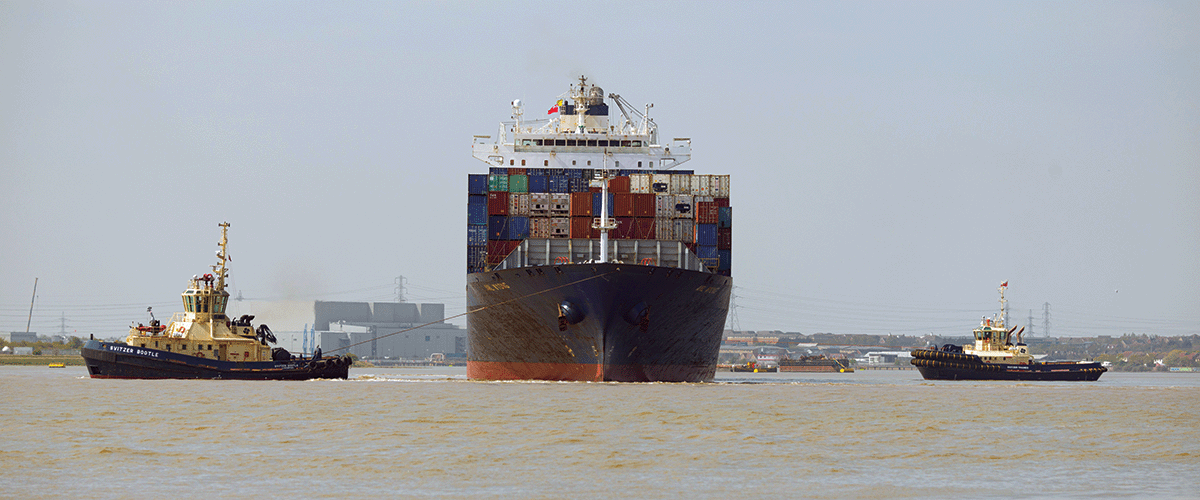
CHIEF EXECUTIVE'S STATEMENT
Robin Mortimer 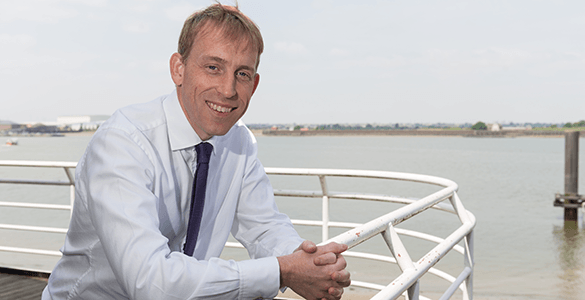 Over the last two years, we are proud of the part played by the Port of London in maintaining essential supplies of food, medicines, raw materials and consumer goods into the UK. We are particularly appreciative of the role played by both front line colleagues, and those supporting them behind the scenes, to make this possible.
Over the last two years, we are proud of the part played by the Port of London in maintaining essential supplies of food, medicines, raw materials and consumer goods into the UK. We are particularly appreciative of the role played by both front line colleagues, and those supporting them behind the scenes, to make this possible.
At the time of writing, we now face a new global challenge following the shocking Russian invasion of Ukraine. The PLA has adopted a new sanctions compliance policy, to ensure that we are fully compliant with all relevant UK Regulations restricting vessels or goods seeking entry to the Port from any sanctioned country.
Over the year ahead, we will also need to respond to the challenge posed by any volatility in global energy or other markets and I am confident that we have the resilience to do that. At the same time, we will keep our focus on the long-term future – set out in our Thames Vision 2050 – and the actions we need to take collectively as Thames stakeholders to achieve the goals in the Vision. In doing so, we will build on a successful year in 2021.
PORT & RIVER OPERATIONS
Trade in the port returned to growth in 2021: 51.8 million tonnes of cargo was handled, a 9% increase from the 47.4 million tonnes moved in 2020. London remained the UK’s largest port by volume of goods handled.
Containers and unitised cargo were the largest in terms of volume, with 23.2 million tonnes handled, up by 6% from 2020. Aggregates and cement trades grew by 20% to 13.1 million tonnes. Inland waterways freight totalled 3.7 million tonnes, a slight increase on 2021 (3.4 million tonnes), albeit against a significant decline in river transport associated with the Tideway projects as large scale construction works near completion.
Demand for our pilotage service increased in line with the increase in port trade. More than 14,000 pilotage acts were completed, with a service level of over 99%. We made further investments in our pilotage services, acquiring Peel Ports’ 50% interest in Estuary Services Limited (ESL), to take full control of the company that provides a pilot boarding and landing service for ships trading to and from the ports of London and Medway.
Investment at Thameside terminals continued apace. Forth Ports completed phase two of their Tilbury2 riverside development. The new construction materials handling facility built for Tarmac is a central part of the ongoing investment programme in the Port of Tilbury and completes the £250m investment at T2.
The first vessel carrying building materials, Bontrup Amsterdam, arrived at Tilbury2 just ahead of Christmas; the terminal has since seen marine aggregate unloading from vessels in the Tarmac dredger fleet. Forth Ports are now turning their attention to further development in their Tilbury3 scheme.
DPWorld London Gateway confirmed plans for a £300 million investment in the development of the facility’s fourth berth, in response to growing demand. Container throughput at the site totalled more than 1.8 million TEU in 2021, an increase of 15% over the previous year.
Forth Ports and DP World are the principal partners, with Ford Motor Company, in the Thames Freeport. The partners’ application for Freeport status was approved by the UK Government and was the second UK Freeport to open for business in December.
Building material operators advanced major projects, meeting strong demand from local and regional construction markets. Hanson is completing developments at both its Dagenham and Victoria Deep terminals and their new dredger, Hanson Thames, made its first port call in January 2022. The new CEMEX vessel, Go Innovation, called on the Thames in September 2021. It unloaded marine aggregates at the CEMEX Northfleet terminal, via the PLA Investment Fund-financed discharge system.
Looking to the future of vessel propulsion, CLdN, operator of the most frequent services between the Thames and Europe, announced orders for two new hybrid freight ferries.
Progress continued with the Tideway project, as they passed the milestone of moving more than five million tonnes of construction specific cargoes by river. The £4 billion project is expected to be fully operational by 2025. Its legacy will be a cleaner river, seven new areas of public space along the Thames and wharf space released for long-term river use.
There was an exciting growth in interest in using the river to move light freight. We facilitated and supported CEVA in running a trial, moving medical supplies daily from Dartford into central London. Further trials and new services are in development. Two studies to look at growing this market were commissioned on the economics of light freight and adapting infrastructure, with the Thames Estuary Growth Board (TEGB), and Cross River Partnership and TEGB, respectively.
The river’s passenger operations started to recover from the particularly difficult year in 2020 when COVID lockdowns first came in. Some 4.5 million passenger journeys were taken in the year (2020: 2.7 million), though this is still just under half of the pre-pandemic level.
Prospects for long-term recovery and growth of passenger operations remain promising. Development of the new Barking Riverside pier is underway, and Uber Boat by Thames Clippers has placed the first UK order for two new hybrid fast ferries. Service innovation saw Woods River Cruises launch the successful Terrible Thames tours, based on the Horrible Histories franchise. Thames RIB operators enjoyed strong demand from UK visitors into the capital; it is hoped this home-based demand will be supplemented by returning international tourists this summer.
We worked closely with the Government taskforce set up to address the closure of Hammersmith Bridge. The bridge was reopened in a limited and controlled way to pedestrians, cyclists and river traffic in mid-July. The bridge transit system we established for river users brought some respite up to this point; we also looked at the ferry options proposed as a solution, should the bridge have remained closed.
FINANCIAL PERFORMANCE
As a profit for purpose organisation, delivering consistent, strong financial returns is key. This enables us to invest in: operational efficiencies, benefitting customers; and developments that increase use of the river and the environment, benefiting the wider stakeholder community.
We delivered a strong financial performance in 2021, with the operating surplus recovering to £8.7 million (2020: £4.4 million) on turnover of £71.4 million (2020: £63.9 million). Increased turnover was driven by the recovery in port trade volumes as COVID-related restrictions eased.
We continue to address the challenges posed by pension deficit repair payments across the schemes in which we participate. The business remains robust and cash positive, investing to support long term growth in river use and diversification of income streams.
SAFETY
Safety is at the core of the PLA, both for river users and across the health, safety and wellbeing of our employees and contractors.
2021 saw a single serious navigational incident reported, the first since 2019. Our team continued to work closely with operators along the Thames as they looked to bring new and innovative projects forward.
In a major initiative to improve safety on the river, from January 2024, Thames Continuous Professional Development will be mandated for Masters and unsupervised watchkeepers on the tidal Thames from Teddington to the North Sea.
There were nine Lost Time Accidents (LTAs) involving PLA employees, visitors or contractors in 2021 (2020: zero). Seventy-six near miss reports were logged, compared to 146 in 2020. A systematic review has been carried out to learn lessons from the incidents in 2021 and a refreshed three-year health, safety and wellbeing strategy is in development.
INVESTMENT
We invested £14.6 million in 2021, across our investment portfolio and in sustaining capital projects. Most of the investment was property related: the acquisition of land and infrastructure at the Dartford International Ferry Terminal and site works at Plaistow and Royal Primrose wharves, readying them to come back into cargo handling use. We are in the process of securing and agreeing tenancy agreements for Dartford and Royal Primrose; Keltbray is already signed as the tenant at Plaistow.
The main operational capital investment in the year, totalling £750,000 related to our core navigation safety service. In two separate projects, the port’s VHF receiver system was replaced, and the first phase of new transceiver work was completed at Crayfordness.
SUSTAINABILITY
Caring for the river environment, improving our environmental performance and inspiring environmental change are key to the way we do business at the PLA.
During 2021, we made preparations for adopting cleaner biodiesel across our fleet. This will enable us to cut our carbon emissions by more than 50% within two years, en route to our Net Zero goal by 2040, or earlier. The first of the tanks for storing cleaner diesel was installed at our Gravesend base in January; the second tank will be installed at Barrier Gardens Pier later in the spring. This will enable the majority of our vessels to switch to the fuel during 2022.
A number of operators on the river are starting to adopt cleaner fuels, some of which reduce carbon and other emissions, including particulate matter and oxides of nitrogen.
The environment team completed the first phase of a significant habitat improvement programme at West Thurrock Lagoon and Marshes, aiming to use natural processes to enhance the condition of the designated Site of Special Scientific Interest.
On broader environmental engagement, the first companies to sign up to the PLA-developed Thames Green Scheme were announced. The scheme recognises organisations committed to improving their sustainability performance. We also led a consortium of eight organisations in securing Government funding for the Hydrogen Highway project - to explore how we establish a national hydrogen highway network, integrating land, sea and port. This will include trialling a hydrogen fuel cell at our Denton Wharf base.
THAMES COMMUNITY
Our work with customers and stakeholders along the Thames supports and facilitates the port and river community in its work. Our weekly newsletter, Tidal Thames News, shares information on the latest ship, terminal, sporting and other developments. Similarly, events like the exhibition London: Port City, on which we collaborated with the Museum of London, provide an opportunity for people to come together, meet and share views.
LOOK AHEAD
The PLA is an organisation transforming. We are playing a key role in supporting safe and sustainable growth in the UK’s largest port and busiest inland waterway, and we have a growing direct investment portfolio supporting greater river use.
To enable this transformation and ensure that we remain fit for the future, our team has been changing and expanding, drawing in people from a diverse range of backgrounds and experience bringing new skills for the future. By the end of the year we had recruited 75 new employees, a significant intake for an organisation
of 451 people.
Investing in our people is key to the future and has been delivered through our active apprenticeship scheme, upskilling of existing employees and support for the Government’s Kickstart scheme.
Through the year we looked closely at how use of the river will evolve, refreshing the river development plan, the Thames Vision, out to 2050. We are consulting on Thames Vision 2050 through the early months of 2022, aiming to publish the final version in the summer.
The goal is ambitious: a safe, smart, sustainable and inclusive tidal Thames – delivering what London and the wider UK needs from its most iconic waterway. The Vision crystalises the ambition for the future and the steps that need to be taken to secure it.
Many of our colleagues in the PLA are working day and night, at times in challenging marine environments. They are key to sustaining a business running 365 days of the year as a key part of essential supply chains. My thanks to everyone in the PLA and the wider river community for their commitment and resolve in 2021.
Robin Mortimer
Chief Executive
4 April 2022
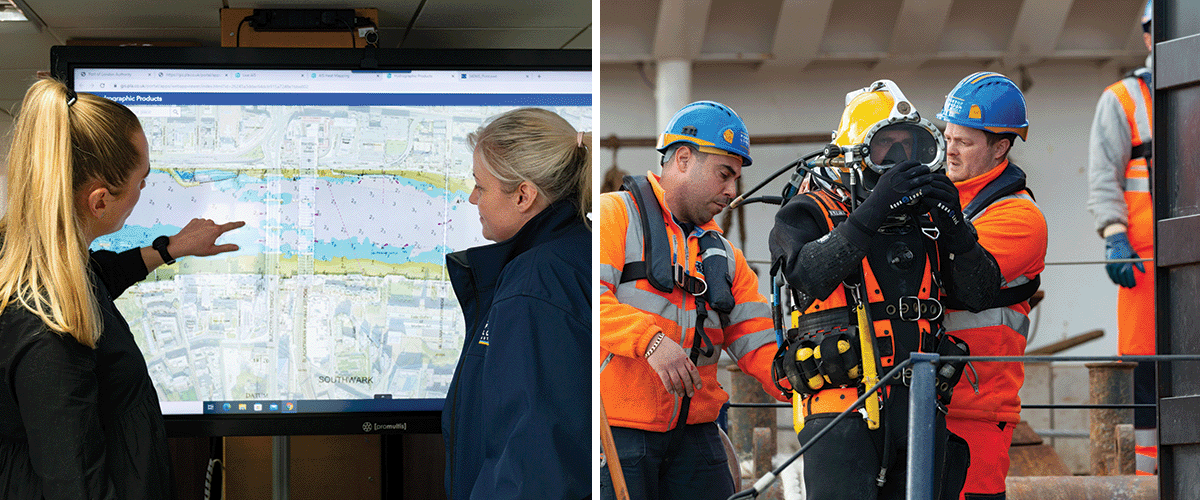
CHIEF HARBOUR MASTER’S STATEMENT
Bob Baker 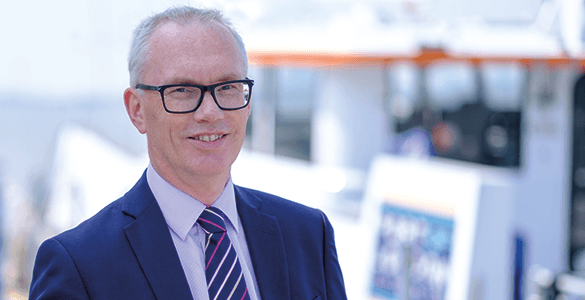 2021 saw the varying levels of activity in different parts of the river that emerged with the onset of the pandemic in 2020 continue.
2021 saw the varying levels of activity in different parts of the river that emerged with the onset of the pandemic in 2020 continue.
The commercial port operated strongly, with total pilotage acts coming close to their 2019 peak and sea pilotage acts exceeding our previous record, while the river through central London and west of Putney remained quieter overall, with passenger operations particularly impacted by varying COVID-related restrictions.
We continued with the COVID security related changes made to our operations in 2020, protecting our people and maintaining operational resilience. There were no COVID-related interruptions to either port control or pilot availability.
There was a single serious navigational incident on the tidal Thames in 2021 (2020: zero). While the uptick from zero incidents is disappointing, the trend continues to be in line with our Marine Safety Plan (2021-2023), which aims to reduce serious incidents by 10% a year, compared to the three-year average.
In my statement in last year’s report, I highlighted pilot ladder deficiencies emerging as the leading factor in commercial shipping incidents. Sadly, that remains the case today, with over half of the 167 deficiency reports last year related to pilot ladders. We will renew our focus on this as ‘fit-for-purpose’ ladders and ladder rigging are the basic safety expectation for our pilots boarding or disembarking a ship.
Our experience on the Thames is seemingly little different from colleagues, gauging by the International Marine Pilot Association annual pilot ladder safety findings, indicating a systemic problem to be tackled.
The number of Near Miss Reports fell dramatically last year to just 35; in 2018 we received more than 100. This is in spite of a Near Miss Report promotional campaign in Summer 2020. We will redouble our efforts to encourage near miss reporting as it is a fundamental part of the major accident prevention pyramid.
Pilotage acts in 2021 recovered to 14,037 (2020: 12,715) not far short of the 2019 record, 14,248. With demand at times exceptional, with more than 50 acts sought in a single day, our sea pilotage service level was 99.1% of all ship calls served as booked (2020: 99.5%).
Pilot recruitment and training is a priority, as we work to match our pilotage team capacity to demand. We continue with recruitment and training at the highest level we can – taking on 14 trainees in 2022, compared to 12 a year since 2016. As the latest lockdown restrictions have eased, post the Omicron variant, we have been better able to get trainee pilots out and on piloted vessels as part of their training.
Bob Baker
Chief Harbour Master
4 April 2022
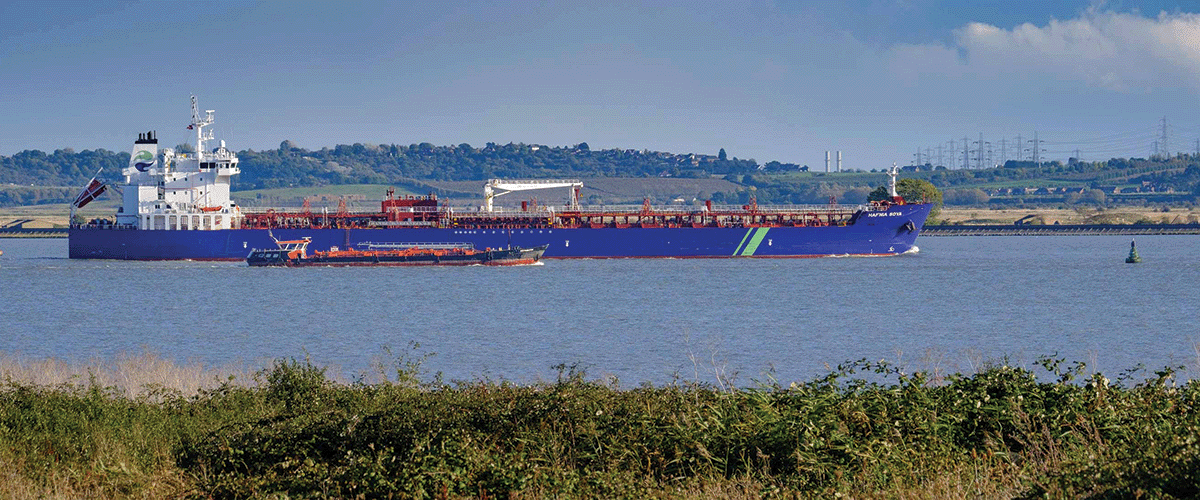
CHIEF FINANCIAL OFFICER'S STATEMENT
Julie Tankard 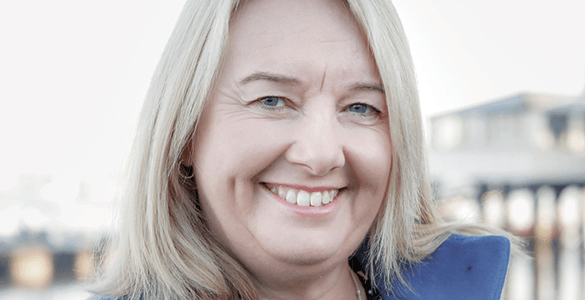 During 2021 we made a good recovery from COVID, however cargo volumes are not yet at pre-pandemic levels, principally due to reduced demand for of oil products. The port remained fully operational through the year and delivered a 99% pilotage service level, sustaining essential supply chains.
During 2021 we made a good recovery from COVID, however cargo volumes are not yet at pre-pandemic levels, principally due to reduced demand for of oil products. The port remained fully operational through the year and delivered a 99% pilotage service level, sustaining essential supply chains.
Turnover was £71.4 million (2020: £63.9 million), a 11.8% increase on the previous year. In nearly all categories income recovered as the economy started to rebound. Vessel and cargo conservancy income increased 7%, property and investment related income was up 11% and pilotage income rose 15%.
Operating profit was £8.7 million (2020: £4.4 million) driven by increased income. We revalue our investment property annually and confirm with an external valuer at least every five years or when there is a significant change in circumstances. This resulted in a gain of £8.3 million, which flowed through the income statement. Total profit after tax was £11.9 million (2020: £2.1 million).
The PLA acquired full control of Estuary Services Limited (ESL) from Peel Ports on 30 March 2021. We had previously been a 50% partner in this joint venture. Our 31 December 2021 balance sheet is presented on a consolidated basis, and the income statement includes ESL results for nine months of the year; our 50% share of the first three months results and fair value uplifts on acquisition are shown as ‘Share of profit from joint venture’ in the income statement.
The acquisition of ESL is strategically important to protect the assets and service of boarding and landing pilots at both Sheerness and Ramsgate. ESL will be run independently day-to-day. It is a key investment in our pilotage operations and explains some of the increase in pilotage income in 2021. We recorded goodwill in the income statement of £0.1 million as ESL was independently assessed at a higher amount than the value paid.
We continue to hold sufficient cash and reserves to service our long-term goals, reflective of our long-term liabilities and for investment in the business. Cash plus short-term and pooled investments at year end were £36.8 million (2020: £39.4 million).
The pension liability in the main PLA Pension Fund as valued under International Accounting Standard 19 (IAS19) resulted in a £55 million improvement in the balance sheet and is recorded in the Statement of Other Comprehensive Income, bringing the total Comprehensive Income for the year after tax to £54.4 million. The liability has reduced due to the change in the accounting discount rate assumption, but this does not impact the cash deficit repair payments.
The PLA Pension Fund is currently in the middle of its triennial valuation. The likely outcome of this will be increased deficit repair payments. Progress has been made on the pension provision. From 1 January 2021 all new employees are enrolled in a new defined contribution scheme, a long-term benefit to the PLA.
We continued to recruit pilots in response to immediate increases in demand, and our customers' long-term expansion plans. This continues the investment we have been making in our pilotage operations for more than five years, to deliver the high level of service our customers expect.
The financial impact of the pilotage business was a £0.7 million loss in 2021 (2020: loss of £1.9 million). Above inflation price increases on pilotage will be needed for the next couple of years to bring this service back to profit and recover the investment made in bolstering the pilotage team.
Over the last four years we have focused on diversifying our income, by investing in property and assets that support greater use of the river, a key aim of the Thames Vision. Rental income grew to £14.2 million (2019: £12.7 million), resulting from market-related river works licence income rises, rent from investment land where safeguarded wharves are brought back into use and income from the CEMEX Northfleet project, completed in 2019.
In 2021 we invested £14.6 million in our business, all from cash reserves. We acquired riverside infrastructure and six acres of prime land in Dartford and are agreeing contracts with an operator for the site. We invested in significant river wall works at Plaistow Wharf and Royal Primrose Wharf to enable both wharves to be returned to cargo handling. Acquiring and developing these sites for use takes time. They do not deliver income in the short term, while tenants are secured and site works completed. Long-term they provide an income stream and capital appreciation.
Investment in our core operations provided for improved operational and environmental efficiency. We purchased two pontoons to provide increased mooring capacity, refurbished the Stonehouse Lighthouse and upgraded to more energy efficient air-conditioning units at our Denton Wharf base.
The VHF radio system upgrade marked the start of a three-year navigational systems and infrastructure upgrade programme.
The overall outlook for the PLA is positive. We are well placed for increased river activity and demand for our services. Our healthy cash balance will underpin the Investment Plan, as we continue to look to diversify our income. High inflation and energy prices are a concern as we go into 2022, with the geopolitical environment unsettled by the war in Ukraine. We are yet to fully understand the impact this will have on the business.
Julie Tankard
Chief Financial Officer
4 April 2022
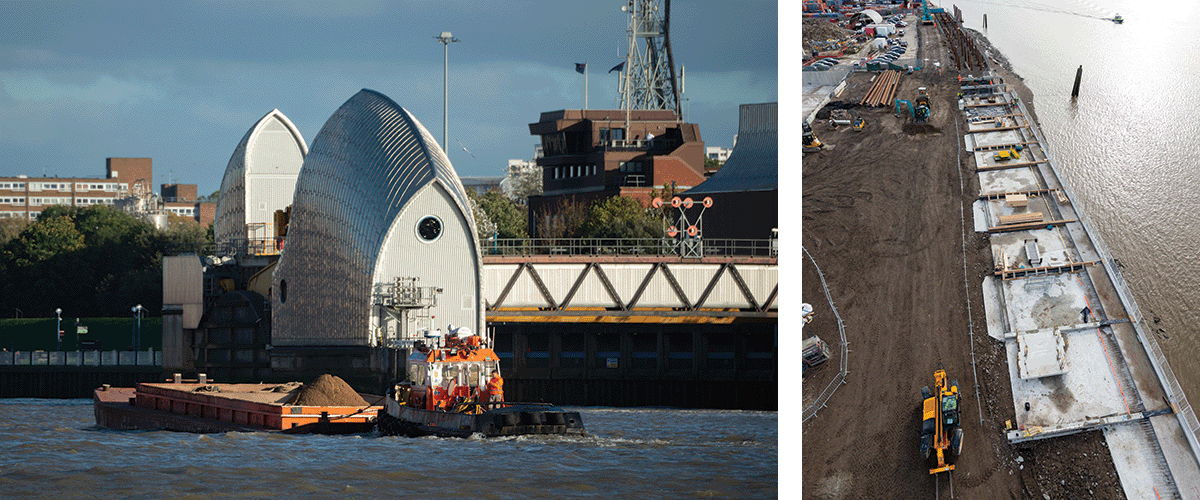
OPPORTUNITIES AND CHALLENGES
At the PLA we manage and respond to a range of opportunities and challenges. This section sets out our headline view of key opportunities and challenges. The Governance section of this report provides details of the full array of factors we address through our risk management process.
OPPORTUNITIES
Long-term port trade growth remains a major opportunity for the PLA. The Oxford Economic port trade forecast commissioned for the review of the Thames Vision sets out a median growth expectation at 72 million tonnes by 2050 (2021: 51.8 million tonnes), with the upper limit around 90 million tonnes.
Short- and medium-term investments and developments underline this growth expectation. Major operators in the port, including DP World at London Gateway and Forth Ports at Tilbury continue to make and plan significant investments in their operations. Other operators, including Stolt, Stema, Tarmac, CEMEX and Hanson are shaping their businesses for the long term, bringing new vessels into their fleets and developing land side facilities too.
The official opening of the Thames Freeport late in 2021 is a further boost to prospects. The lead operators, DP World London Gateway, Forth Ports and Ford Dagenham, project that Freeport status will underpin the creation of more than £1 billion of investment in new port infrastructure and more than 21,000 new direct and indirect jobs on its estate.
The emergence of unprecedented levels of interest in the river for moving light freight is a major opportunity for the PLA. We are working with logistics companies, their customers and others to turn their aspirations into operational reality.
Our programme of selective investment in riverside property through our Investment Plan supports growing river use, including developments in the light freight sector. Completed projects are delivering solid returns, increasing volumes on the river and improving the PLA’s financial resilience by diversifying income streams. The pipeline of future investment opportunities remains strong in the short- and medium-term.
The progressive reshaping of trade following the UK’s departure from the European Union continues to present opportunity for increasing trade. The ‘unaccompanied freight’ model used by Thames freight ferry operators is better suited to the new customs requirements and the port has a strong mix of non-EU trading partners.
The Thames Tideway Tunnel is the largest project on the river in central London for over a century. Its principal long-term benefit will be a cleaner river. During construction operations, the project’s use of the river has underpinned investment in vessels, tugs and barges and embedded higher standards on the river, a legacy for the future.
The expected long-term growth in activity on the river will result in demand for more skilled people. As the nature of vessel technology and river operations changes, existing workers will need to maintain and upgrade their skills. The establishment of the UK’s first Continuous Professional Development programme for inland waterways, developed with the Thames Skills Academy, the Company of Watermen & Lightermen and Thames operators, will help to address this.
The updating of the river development framework, the Thames Vision, covering the period to mid-century was a major focus in 2021, work that will conclude by summer 2022. Thames Vision 2050 identifies five priority areas for action which embody opportunity and challenge on the river: safety, the Net Zero transition, resilience, technological change and access & inclusion.
As the UK’s biggest port by tonnage of goods handled and the largest inland waterways for internal freight movements, on the doorstep of the country’s largest concentration of population, there is a major opportunity for the Thames to be central to the developments of a decarbonised economy. Operationally, we have a commitment and route to achieve Net Zero by 2040, or earlier.
CHALLENGES
The challenges for the PLA encompass economic, environmental, technological and social factors.
The most pressing challenge is to understand and adjust to the implications of conflict between Russia and Ukraine. This has potential to affect economic growth prospects, port trade and operational costs. The rise in energy prices has potential to impact both the outlook for economic growth and operational costs, if they remain high for a long period. The supply of oil products through the port, already impacted by COVID restrictions could be further depressed either due to supply constraints or reduced demand.
Resilience related challenges are emerging as increasingly important. Responding to the coronavirus pandemic involved operational and economic steps, including creating a COVID-secure workplace, prudently managing finances and supporting the worst affected customers.
Over the long term, climate change will be a major issue. In our response we will be mitigating the impacts of climate change, such as sea level rise and increasing extreme weather events. In adapting to climate change we will be working with key partners including the Environment Agency who are looking at long-term flood defence management on the river through their TE2100 programme.
We are recruiting actively to meet the increasing service demands of the growing port. In common with many UK employers, we have found recruitment to be increasingly difficult as the economy emerges from the worst of the pandemic. So far this has not proved to be problematic in the recruitment of trainee pilots, a major priority for the business. We remain concerned about the availability of quality candidates over the long term.
The business is adjusting to technological change that is expected to advance at pace through the development of new propulsion and other ship technologies, for example. Managing safety in this more complex environment could prove increasingly challenging. Our principal response is scoping the development of a new marine control centre at Gravesend with flexibility designed in to respond to the changing demands of ship automation over the next 30 years.
Our IT systems are similarly benefiting from significant review and upgrade to ensure robust operations. Cyber security remains a major focus with shipping lines and ports targets for IT system attacks. We have detailed plans for further strengthening the security of our systems, including user education.
Trade patterns and the make-up of cargo passing through the port is expected to change markedly between now and 2050. The transition from fossil fuels for transport is expected to reduce a major element of port trade; low/zero carbon alternatives are expected to replace them, though at lower volumes. We will pay close attention to the safety needs for safe transit of any new fuels.
The PLA has an interest in a number of pension schemes, which provide an exposure to the movement in value of stocks, shares and other investment markets. We are currently in the middle of the triennial valuation of the main PLA pension scheme and the outcome of that will be agreed with the trustees. This could impact on our future financial flexibility. It is increasingly apparent that the scheme is very expensive, albeit the introduction of new defined benefit provision in January 2021 for new joiners has mitigated some of the long-term liability.
Demand for our pilotage service remained robust through the principal pandemic year of 2020 and bounced back strongly through 2021. To continue meeting the ‘on demand’ requirements of our customers, we are investing in new pilot recruitment and supporting infrastructure. COVID-related restrictions had impeded the progress of pilot training through a lot of the last two years. With restrictions now essentially lifted, it is a priority area for the business.
The Tideway scheme has presented a navigational safety challenge linked to the operation of 12 construction sites in and alongside the river. We have managed the high level of consenting and other demands linked to the project with a statutory consenting team and harbour master dedicated to the scheme and other major projects.
In an increasingly busy port and river, use of the finite space available has to be carefully managed. We work to balance the competing demands from trade, travel and recreation. Developments with potential to encroach on usable river space include new crossings and new or expanded windfarms.
We support the development of more river crossings in London as essential to continued economic development. In an increasingly busy maritime city river, we keep a close focus and liaise with relevant stakeholders to ensure that new projects will not impede the established rights of navigation.
The difficulties resulting from the closure of Hammersmith Bridge for all users, including river traffic passing underneath, underlined the importance of crossings and the impact they can have if access is suspended. We engaged with the Government Taskforce and facilitated river traffic through the closure period.
In seeking to develop increased renewable energy generation capacity, the UK windfarm sector is expanding. A busy route for navigation to the UK’s largest port, the Thames estuary is already home to a number of large windfarm developments. To ensure unimpeded, safe navigational access to the port, all windfarm proposals are subject to careful consideration. We work actively on this with scheme developers, shipping lines, service providers and terminal operators who would be affected.
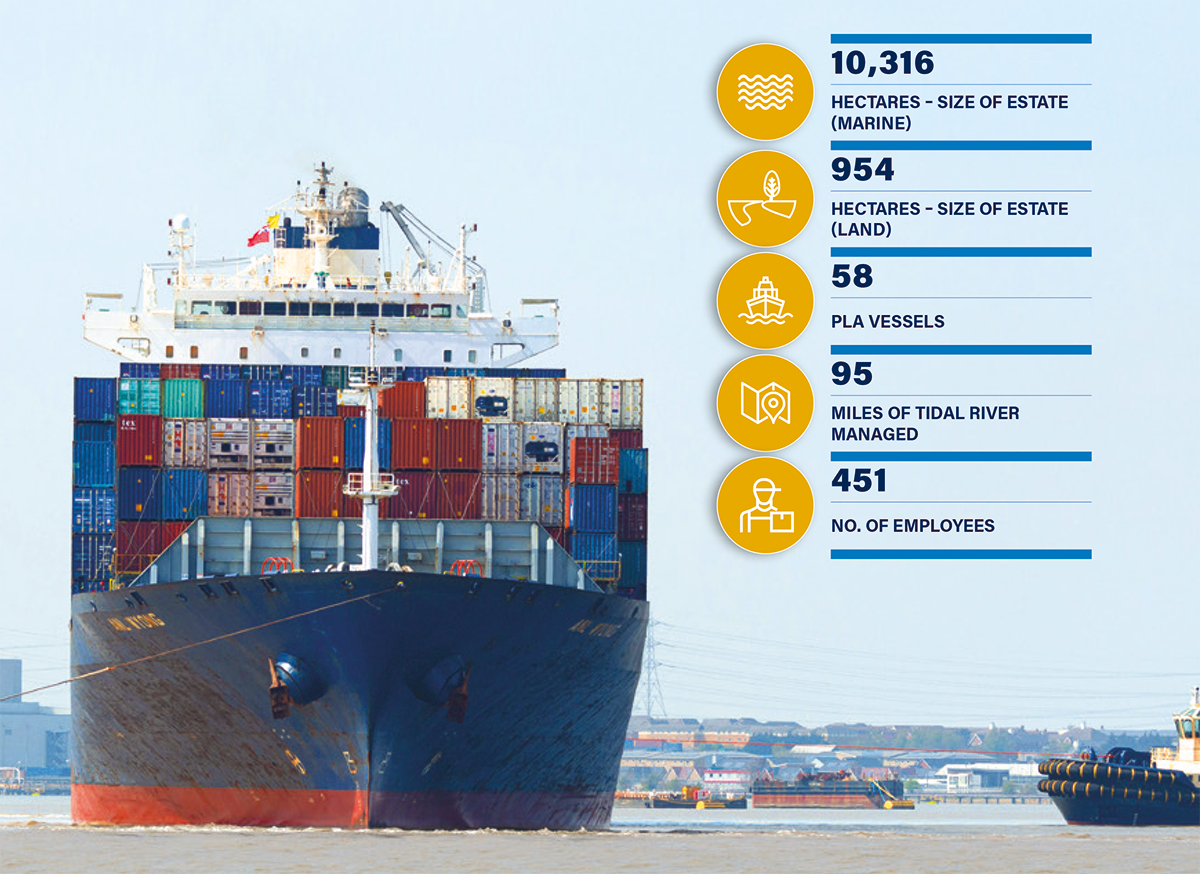
PLA STRATEGY
As a Trust Port, we hold the Thames in trust for future generations. We have no shareholders, so operate for the benefit of customers and stakeholders now and in the future.
The stakeholders’ ambition, as set out in the Thames Vision, is to see the river play a much greater role in the life of London and the south east, from trade and travel to sport and recreation. To support this ambition, our strategy is centred on three core roles for the PLA:
Protect targeting Zero Harm and improved sustainability
Improve running efficient operations and investing to support growing river use
Promote leading the Thames Vision to unlock the potential of the Thames
The Thames is the UK’s busiest inland waterway and the Port of London the country’s biggest port. The most recent assessment of the economic impact of the port, completed pre-pandemic in early 2020 found a total of 48,000 jobs sustained by the port and river, which made a Gross Value Added contribution to the economy of £4.5 billion. Returning to these levels will be a target in the refreshed Thames Vision, as we build back from the pandemic.
Our experience shows that a strong and effective PLA supports growth through creating the ‘virtuous circle’, shown below. Delivering on our commitments to Protect, Improve and Promote will help develop the competitiveness and sustainability of port and river operations. This underpins growth in river use and generates a financial return, which we can invest again in protecting, improving and promoting.
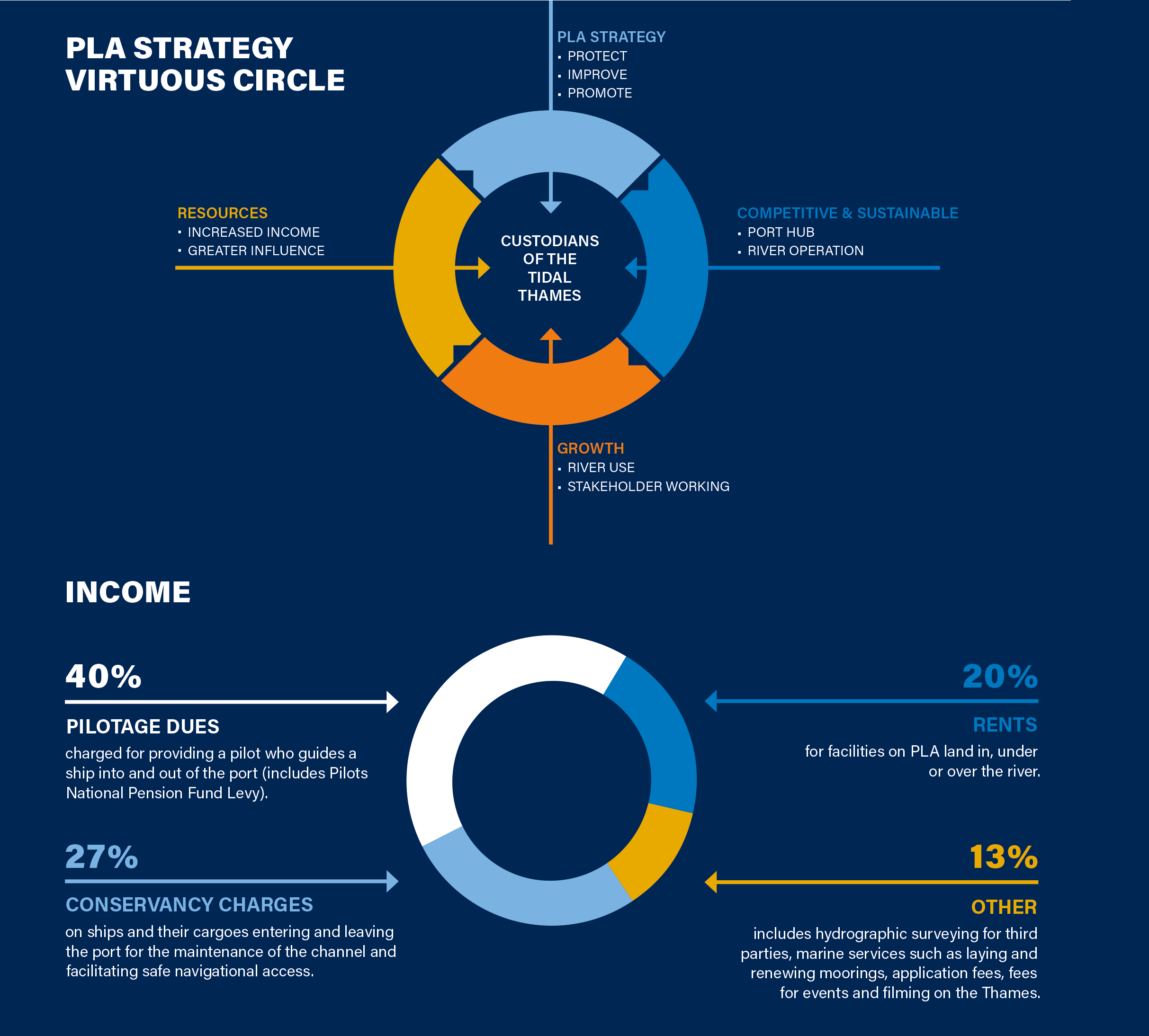
STAKEHOLDER BENEFITS
As a Trust Port we provide stakeholders with a range of benefits, alongside discharging our specific duties.
When asked in independent research, stakeholders identified our main contributions being in: river navigation and safety; environmental stewardship; planning consultation and technical expertise; bringing people together and promoting the river.
Our river advocacy increased through the development with stakeholders of the Thames Vision and its subsequent implementation. The Vision, launched in mid-2016, provides a framework for the river’s development over 20 years to 2035.
Through 2021 we were engaged in detailed studies and consultation to develop a new Thames Vision 2050, updated to reflect the challenges and opportunities for the river between now and the middle of the century. The updated Vision is themed around the Trading Thames, Destination Thames and Natural Thames, with priority area for action around the Net Zero transition, resilience, technological change and inclusion.
We will be consulting on the draft updated Vision through the first half of 2022, ahead of launching it mid-summer.
Our main contributions to stakeholders are, in more detail:
RIVER NAVIGATION AND SAFETY
Our port control centres, harbour masters, hydrographers, river patrol and pilot cutter crews help keep river users safe. Our salvage operations and divers keep the river clear of obstructions and open for business. We are responsible for river traffic control and navigational safety, including buoys, beacons, bridge lights and channel surveys.
ENVIRONMENTAL STEWARDSHIP
We hold the tidal Thames in trust, with the remit to hand it on to succeeding generations in better condition. A major part of our work is conservancy of the Thames, maintaining the main navigation channels on the river. As stewards of the marine environment, we look after the river’s many assets, conserving wildlife, keeping the river clean and free of rubbish with our Driftwood service. We are working closely on improving air quality on the tidal Thames. We maintain the tow path, revetment wall and are developing a long-term management plan with the London Borough of Richmond-upon-Thames. Promoting the use of the river as a natural, low-carbon transport route is a key activity too.
PLANNING CONSULTATION AND TECHNICAL EXPERTISE
We provide information, support and significant technical expertise to help river users and investors maximise the value of the river, and to do it safely. We consent river works and dredging, applying our expertise to keep river users safe and protect the environment.
BRINGING PEOPLE TOGETHER AND PROMOTING THE RIVER
We bring people together to discuss how to make the best use of the Thames and advocate its potential. We work with, and for, a wide range of stakeholders and partners on commercial freight, investment, property, safety, conservation, leisure, tourism, passenger transport, sporting pursuits and major events. We try hard to be a ‘listening’ organisation as well as one that delivers what our stakeholders need and want.
STAKEHOLDER BENEFIT
Set alongside the economic and amenity benefits that our operations underpin, we also generate a substantial benefit to the community, estimated to be £46.1 million in 2021 (2020: £42.2 million).
The major stakeholder benefit project in 2021 was the opening of the exhibition, London: Port City, at the Museum of London Docklands. This was the culmination of some three years’ planning and an investment in additional archive cataloguing and exhibition development of some £300,000.
Our support for seafarers visiting the port is via the Tilbury Seafarers Centre, to whom we make an annual grant, alongside assistance for centre improvement. Their work sustaining visiting seafarers through the pandemic has been essential.
A major future commitment was made in 2021, to encourage early-sign up to the Thames Continuous Professional Development programme. Over five years an investment of over £150,000 will lower the costs of a two-day simulator course, delivered at HR Wallingford in Oxfordshire. The first payments under this commitment will be made in 2022.
Thames Festival Trust is our main partner for cultural outreach; our support for Thames21 links to the core objective of improving the marine environment. Thames Explorer Trust provides Thames educational sessions for classes in schools along the river.
The major investment under the PLA Investment Plan in 2021 was the £7.7 million acquisition of Dartford International Terminal. The site attracted significant interest when we marketed it subsequently; a tenant has been selected and is expected to start operations during 2023. This is in line with the Investment Plan’s principal goal, supporting developments focussed on increasing use of the river, a main Thames Vision theme.
Progress with existing investments in 2021 included site works costing more than £2.6 million, readying Plaistow and Royal Primrose wharves for operations due to complete in the first quarter of 2022.
More than £43 million is paid in taxes, wages and other employment costs which contribute directly to the local economy. A full breakdown of our stakeholder benefit calculation can be seen in the table at right.
PLA In the Community | 2021 (£) | 2020 (£) |
Major Charitable Donations | ||
Thames21 | £50,000 | £30,000 |
Thames Festival Trust | £45,000 | £45,000 |
Tilbury Seafarers Centre | £44,667 | £33,460 |
Other Charitable Donations | £2,184 | £3,742 |
Riverside Code & Community Outreach | £350 | £600 |
Museum of London Docklands - membership | £32,204 | £31,234 |
Museum of London Docklands - 2021 exhibition | £100,000 | £60,000 |
Active Thames grants | £47,568 | £0 |
Environmental Fund awards | £12,995 | £0 |
Community activities on the river | £4,511 | £11,200 |
London International Shipping Week | £5,000 | £0 |
Gravesend Rowing Club | £100,000 | £0 |
British Antarctic survey vessel visit support | £30,000 | £0 |
Thames21 | £24,000 | £72,000 |
Gravesham Borough Council (Town Pier) | £3,875 | £3,833 |
£502,354 | £291,069 | |
Activities required for core PLA responsibilities which generate wider stakeholder benefit | ||
Archive at Museum of London Docklands | £90,815 | £103,097 |
River bank maintenance | £92,920 | £64,375 |
Richmond Lock and Weir | £559,951 | £576,189 |
£743,686 | £743,661 | |
Activities carried out as part of the PLA investment plan | ||
RSPB Grant | £0 | £85,477 |
£0 | £85,477 | |
Government Benefit* | ||
Taxation – Pay As You Earn | £9,910,292 | £9,630,340 |
National Insurance (employer's, and employees elements) | £5,285,341 | £5,159,536 |
Corporate Taxation and Business Rates | £1,003,868 | £227,054 |
£16,199,501 | £15,016,930 | |
Business Community Benefit | ||
Subscriptions to Business Organisations | £104,027 | £79,115 |
Thames Estuary Partnership | £0 | £15,000 |
Centre for London Partner forum membership | £12,500 | £0 |
Centre for London conference and event support | £32,500 | £0 |
Thames Skills Academy | £50,000 | £25,000 |
£199,027 | £119,115 | |
Employees’ Benefit | ||
Employee remuneration, pensions costs and benefits | £28,450,354 | £25,964,790 |
£28,450,354 | £25,964,790 | |
Total Stakeholder Benefit | £46,094,922 | £42,221,041 |
* includes 50% Estuary Services Limited (ESL) to end March 2021, and 100% on ESL becoming a wholly owned subsidiary and based on business rates plus the current tax charge.
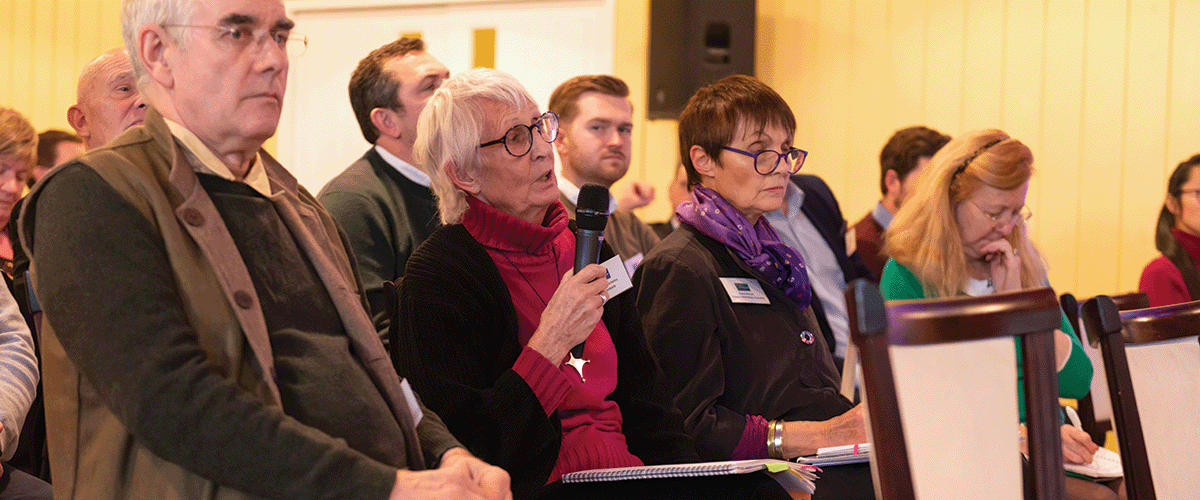
ENGAGING WITH STAKEHOLDERS
As a Trust Port we work closely with our stakeholders in maintaining a safe river, caring for the environment and promoting use of the Thames. This section details how we engage with stakeholders, drawing their views into our decision-making processes.
Department for Transport guidance describes a Trust Port as:
‘a valuable asset presently safeguarded by the existing Board, whose duty it is to hand it on in the same or better condition to succeeding generations. This remains the ultimate responsibility of the Board, and future generations remain the ultimate stakeholder.’
In considering the long-term development of the river, the Board has regard to factors including: long-term consequences; how decisions affect our customers, employees and the wider community; minimising environmental impacts and improving the environment wherever possible; reputational implications; and fairly balancing different stakeholder needs.
In running the PLA, the broad stakeholder groups the Board considers are:
- Customers: river users (including operators of seagoing cargo vessels, inland freight vessels, passenger vessels and recreational users), commercial port operators (including the operators of cargo handling facilities) and others (including our licensees, tenants and those to whom we provide third party services)
- Employees
- Local communities and NGOs
- Government, elected representatives, regulators and local authorities
Board members remain in touch with key stakeholders’ views through engagement, studies and visits including:
- Annual employee engagement study
- Annual stakeholder audit
- Annual stakeholder meeting
- Public meetings
- Site visits
- Customer meetings and feedback
The following tables set out the main types of stakeholders, their areas of interest, our engagement channels and how different Board Committees and the Board of Directors address stakeholder interests.
The following charts set out the main types of stakeholders, their areas of interest, our engagement channels and how different Board Committees and the Board of Directors address stakeholder interests.
| Customers | ||||
| Areas of interest | Engagement channels | Committee/Board Agenda | ||
|
|
| ||
| Employees | ||||
| Areas of interest | Engagement channels | Committee/Board Agenda | ||
|
|
| ||
| Local communities and NGOs | ||||
| Areas of interest | Engagement channels | Committee/Board Agenda | ||
|
|
| ||
| Government, elected representatives, regulators and local authorities | ||||
| Areas of interest | Engagement channels | Committee/Board Agenda | ||
|
|
| ||
| The table below sets out four key Board decisions in 2020 and the manner in which stakeholder views were drawn into the decision-making process. | ||||
| Board decisions and their impact on stakeholders | ||||
| Decision | How we took stakeholders into account | Long-term implications | ||
| Coronavirus response & contingency plan |
|
| ||
| Thames Vision 2050 development |
|
| ||
| Risk appetite |
|
| ||
| Gravesend Accommodation Project – Phase Two/new Port Control operation |
|
| ||
PERFORMANCE
RIVER USE 2021
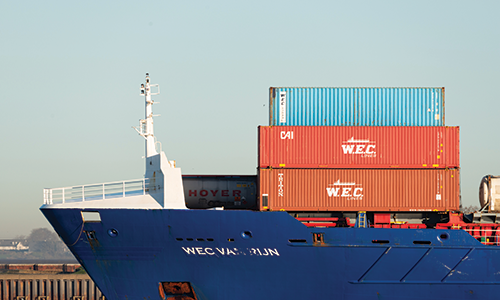 PORT TRADE Trade in the Port of London rose to 51.8 million tonnes in 2021, increasing by 9% from 47.4 million tonnes in 2020. The recovery in volumes resulted from the economy opening up progressively as followed COVID-19 restrictions generally started reduce. Unitised trades saw robust growth, up by 6% overall to 23.2 million tonnes, compared to 21.8 million tonnes in 2020. The growth in containerised trades followed from the first full year of the Tilbury2 freight ferry operation, combined with London Gateway continuing to attract new business. The unaccompanied trailer model for Thames freight ferries remains attractive post-Brexit./p> Movement of building materials (13.1 million tonnes) saw a large percentage increase, rising by more than 20% from 10.9 million tonnes in 2020 as the economy rebounded from the pandemic induced shut downs during the year. Trade in oil products continued below 10 million tonnes, with demand for air travel and road supressed by restrictions, albeit with throughput increased compared to 2020.
| 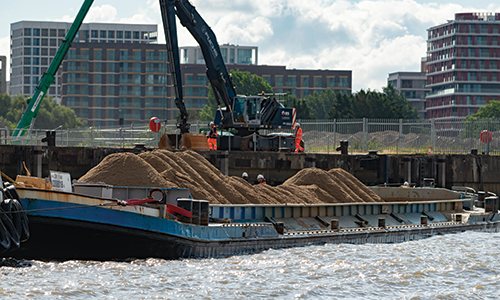 INLAND WATERWAYS FREIGHT Freight moved between terminals on the Thames, which we define as inland freight, totalled 3.7 million tonnes, up from 3.4 million tonnes in 2020. The materials moved by river consisted of the traditional bulk cargoes including waste and construction products, with the light freight sector of small packets and parcels rapidly emerging too. CEVA ran trial daily river deliveries of medical supplies for Guy’s and St Thomas’ hospitals from Dartford to Butler’s Wharf in London, and DHL’s now established operation into Bankside pier was also extended eastwards to Wapping. The longest established river user, Cory, continued their essential domestic and commercial refuse related operations alongside an extensive fleet renewal programme, expansion plans for its energy park and an aspiration to develop carbon capture and storage. They also acquired the McGraths waste company based in Barking Creek, expanding their footprint of Thames-linked operations. Tideway passed a major river use milestone in 2021, with five million tonnes of material transported by river so far, saving some 600,000 HGV journeys. Since tunnelling started, 98 per cent of material excavated from the main tunnel has been transported by river and a large majority of project-related cargoes are being moved on the river, easing congestion and reducing carbon emissions. Development of the marine industrial complex in Newham, encompassing the safeguarded Peruvian, Plaistow and Royal Primrose wharves continued. River wall and quayside improvement works started in the autumn at Plaistow and Royal Primrose will be completed by spring of 2022 and the wharves will then be available for use by tenants. Long-term innovation in freight movements were brought forward by the Livett’s Group, whose new vessel, Bravo Lima GB has been designed to pick up goods from miles of Thames foreshore, slipways, stairs and beaches. This opens up transport options beyond the traditional piers.
| |
PASSENGER TRAVEL The number of passengers on the river started to recover in 2021 with 4.5 million trips completed, compared to 2.7 million in 2020. Ridership remains just under half the ten million trips a year regularly seen on the Thames pre-pandemic. With a return of international travel in 2022, it is hoped the sector will fare much better. Pier network development continues with work now underway on the construction of the pier at the major riverside residential development at Barking Riverside. The pier will be the most easterly stop for Uber Board by Thames Clippers’ scheduled service once it comes into operation this year. Looking to the future for passenger vessel propulsion, Uber Boat by Thames Clippers announced later in the year plans for two new vessels, the UK’s first hybrid high speed passenger ferries, set to launch in autumn 2022 and spring 2023.
|
SPORT AND RECREATION The number of formal sports events on the Thames continued at low levels as COVID restrictions persisted for much of the year. The total fell to 137 from the 2019 all-time high of 430. Major events affected were the University Boat Races, which transferred to Ely in Cambridgeshire and the Great River Race, which was postponed for the second year in a row. Development of the Active Thames programme continued. The programme’s first grant funding round saw more than £90,000 awarded to 24 organisations promoting activity on the tidal Thames and inland waterways in London, Kent and Essex, as part of the Active Thames programme. Engagement with sports and recreational clubs and individuals taking to the water continued throughout the year. Dedicated patrols later in the summer reached people taking to the water solo on stand-up paddleboards and other craft with essential information to help them stay safe.
|
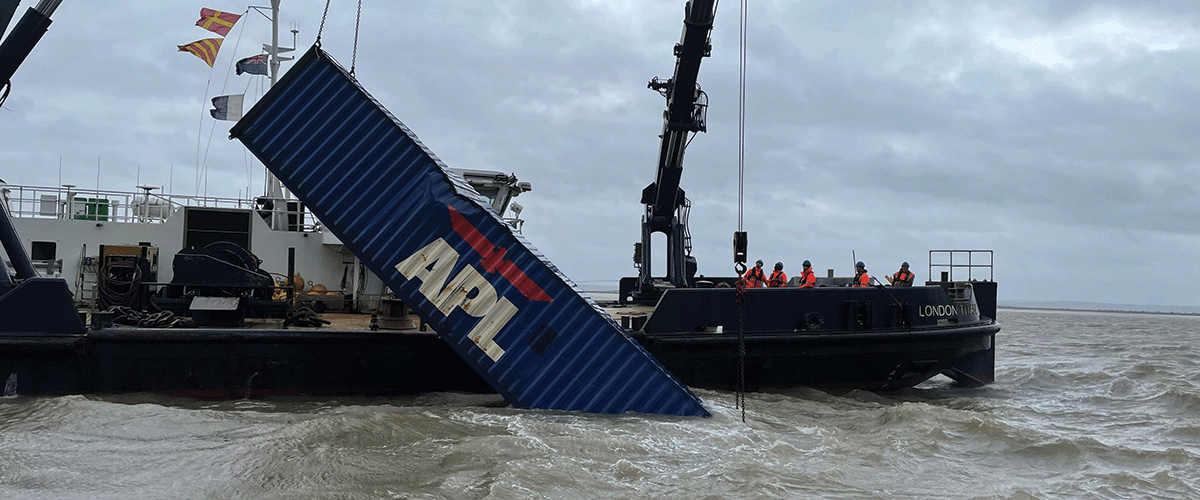
RIVER NAVIGATION AND SAFETY
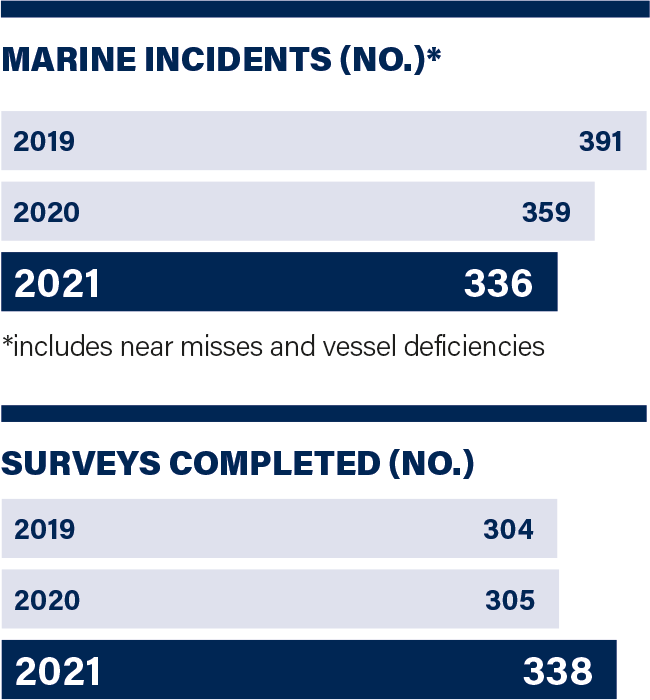
Our main responsibility is maintaining Thames river channels and managing navigation along 95 miles of the tidal Thames, downstream of Teddington Lock.
We use our Marine Safety Management System to review the hazards and risks to safe navigation and put measures in place to address them. These include navigation lights and buoys, hydrographic services, pilotage and Vessel Traffic Services control centres at Woolwich and Gravesend, which oversee safe navigation over 400 square miles.
We adopted a new three-year Marine Safety Plan in 2021. The plan features six objectives, including a 10% reduction in serious and very serious incidents across the duration of the plan. In 2021 there was one serious incident, compared to none in 2020. Other objectives include raising the standard of port-wide voice communications and targets for investigation close out.
2021 river safety performance varied by type of activity. Commercial shipping and recreational incidents declined, while the number of inland waterways vessel incidents increased by 24% compared to 2020.
Operationally, 2021 was the first full year of the integrated ‘one river’ harbourmasters team, with all the positions in the team filled. We completed the installation of an advanced new maritime communications system with improved resilience and reliability to handle all communications at our two control centres.
A long-term development project is underway for an enhanced marine control centre at Gravesend, able to manage the growth in port trade and accommodate changes in vessel and port technology that are expected.
Emergency exercising continued, with a live exercise in the autumn around Millwall Slipway and Limehouse Reach. The exercise involved the deployment of PLA assets, our Tier Two oil spill clear up partners, Adler & Allen, alongside the Maritime & Coastguard Agency, Environment Agency and local council.
The new continuous professional development (CPD) programme that we developed in partnership with the Company of Watermen and Lightermen and the Thames Skills Academy was officially launched in 2021. We have since committed to subsidise the simulator element of the programme in its initial years, reducing participant and employer cost ahead of the CPD becoming mandatory in 2024.
As part of our work with the tidal Thames Water Safety Forum, a new water safety guide for residents living close to the tidal Thames was launched during the Royal Life Saving Society’s Drowning Prevention Week. The Riverside Community Water Safety Guide provides comprehensive advice on enjoying the river safely for all those living or working in properties near the river, as well as recreational users of the 95-mile length of the Thames, from Teddington to the coast.
Recreational use of the river for emerging sports such as stand-up paddleboarding (SUP) continued to grow. The majority of people taking up SUP tend to do so outside a formal club structure. In order to reach them we established dedicated engagement patrols to share specially developed safety information handouts.
We continued to stay close to discussions around the closure of Hammersmith Bridge to all traffic, including vessels on the river. After structural assessment, the London Borough of Hammersmith & Fulham officially reopened the bridge in a limited and controlled way to pedestrians, cyclists and river traffic in mid July 2021. In the period leading up to that, we created and operated a system allowing river users to book transits at a limited number of times each weekend.
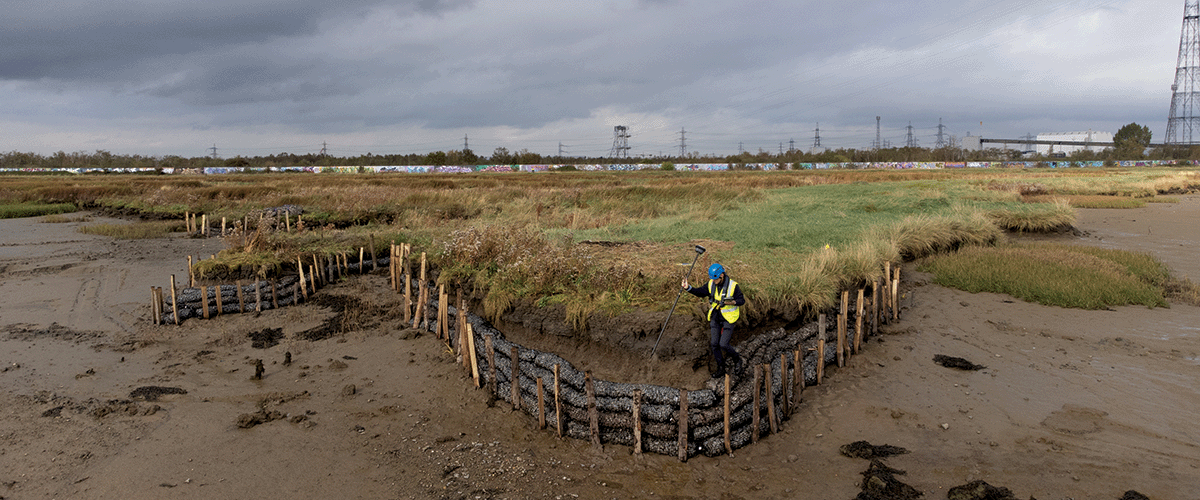
ENVIRONMENTAL STEWARDSHIP
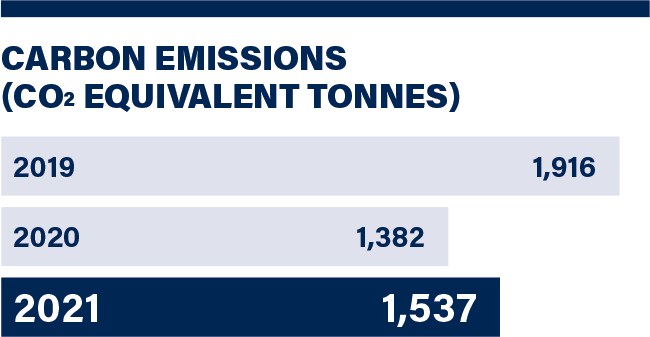
We conserve and enhance a range of diverse, thriving habitats for many different species of fish, birds, seals and other wildlife alongside the thriving commercial port and river activities. Our environment team works across an environmental agenda encompassing air quality, carbon emissions, habitats and water quality.
As part of our programme to achieve Net Zero operations by 2040 or earlier, preparations commenced for the conversion of the PLA vessel fleet to run on a cleaner biodiesel. The required new fuel tanks were acquired and prepared during the year; they were installed at our Royal Terrace Pier base in the first month of 2022, with vessels switching over to the fuel thereafter.
Carbon generation in 2021 was 1,537 CO2 equivalent tonnes. This increase from the 1,382 CO2 equivalent tonnes emitted in 2019 resulted from increased trade and COVID-related restrictions having a reduced impact on PLA operations. The first full year of operation for the photovoltaic cells installed on the roof of our London River House office building saw electricity generation almost double to 115,498 kWh (2020: 62,264 kWh).
To support the continued progress of the carbon reduction programme at pace, the environment team was, from the start of 2022, integrated into a newly created directorate of sustainable marine operations.
Habitat restoration work was completed at West Thurrock Lagoon and Marshes, a Site of Special Scientific Interest, near Stoneness, affected by coastal erosion. Contractors undertook a programme at the 3.6-hectare site that will use the river's natural processes, over time, to restore the intertidal levels back to where they were 30 years ago.
Looking to the long term, there were extensive debates with partners around the Thames Vision, including the ambitions for the natural river as a whole, and carbon reduction in particular. Studies commissioned to inform this long-term view included modelling the future energy demand and supply on the tidal Thames as a zero carbon port for the future. In addition, a site for trialling tidal energy-generating technology was designated by the PLA.
A major achievement for the PLA in its future facing role was leading a consortium of eight organisations in a ground-breaking development project to look at the scope to establish a national hydrogen highway network, integrating land, sea and port.
Under the Smart Maritime Land Operations Call, a Maritime Research and Innovation UK (MarRI-UK) initiative supported by the Department for Transport (DfT) the two-year project will benefit from £1.3 million funding towards the £2.1 million total cost, with project partners. The PLA specific projects in the programme include designing a hydrogen fuel cell generator for installation at our Denton Wharf base and developing a safety tool kit for bunkering and transfer of alternative fuels with Health & Safety Executive, Maritime & Coastguard Agency and other partners.
Our ‘green’ discount for environmentally cleaner ships calling on the Thames was launched in 2017. In 2021, 211 commercially trading vessels calling on the Thames achieved the required Environmental Ships Index standard to qualify for the discount. The benefitting vessels collectively visited the port 1,184 times. The team is working with other international ports on revisions to calculations in the index, preparing for the implementation of higher standards for ships in 2023.
We introduced the Thames Green Scheme at the end of 2020 to encourage inland vessel operators' adoption of more environmentally friendly practices. The first Green Scheme accreditations, recognising vessel owners’ efforts to protect the environment, were awarded to Kent-based GPS Marine and Jetstream Tours in spring 2021.
Our 2021 Environment Fund grants programme sought to support volunteer projects tackling litter and invasive non-native species (INNS) on the tidal Thames. Five initiatives won a share of the total £25,000 pot, securing grants to boost their work, including Dartford & Crayford Creek Restoration Trust, AHOY Litter pickers and Sheppey Coastbusters.
NET ZERO TARGET
Our target is to be Net Zero for carbon emissions by 2040, or earlier. This will be achieved primarily by driving down carbon emissions, with the predicted small amount of remaining emissions removed from the atmosphere by planting on our own estate. The emission reduction will be achieved by a switch to biofuel, which is underway (until suitable zero emission vessels become available), transition to low and zero emission vehicles and looking to increase on-site generation of renewable energy, while continuing to identify efficiency measures across our operations.
2021 COMMENTARY
The level of PLA activity increased through 2021 as port trade grew and we recovered to a more normal level of river and other maintenance; this was lower in 2020, the first year of COVID restrictions. Vessel fuel consumption and carbon emissions consequently rose in 2021 by 6%, compared to 2020. This is reflected in both the total energy consumption and total gross emissions, shown in the graph below.
Total carbon emissions for the year were 1,537 tCO2 (excluding the reduction for renewable electricity tariff); the baseline for our carbon emissions reduction programme is 2014, when emissions were 2,054 tCO2.
ENERGY EFFICIENCY AND CARBON REDUCTION ACTIONS
2021 was the first full year since the refurbishment of London River House. This work included installation of new, efficient heating and ventilation, low energy LEDs, improved roof insulation and installation of low energy and low water consuming appliances. The roof of the main building was fitted with solar photo-voltaic (PV) panels to generate renewable electricity.
Our electricity is supplied on a 100% renewable energy tariff, backed by Renewable Energy Guarantees of Origin (REGOs) and classified as zero emission. The solar PV panels at our Denton Wharf base provide renewable energy for on-site use; the new solar PV panels at London River House started generating electricity in August 2020.
Following successful trials completed in 2020, we are progressively adopting biofuel (Hydrogenated Vegetable Oil or HVO, from waste products) across our vessel fleet. Using biofuel significantly reduces Scope 1 emissions as carbon is deemed to be offset by the carbon absorbed during plant growth.
CARBON INTENSITY
We have used an intensity ratio based on millions of tonnes of cargo, an appropriate measure for a port as it is an indicator of activity levels. In 2021, 51.8 million tonnes of cargo were received in the port, 4.4 million tonnes more than 2020. This equates to a gross figure of 36.3 t CO2e per million tonnes of cargo and a net figure of 29.7 t CO2e per million tonnes of cargo.
METHODOLOGY
We followed the UK Government Environmental Reporting Guidelines 2019 and the UK government 2021 conversion factors spreadsheet in calculating our 2020 emission figures. Carbon footprint is reported in terms of tonnes of carbon dioxide equivalent (CO2e). This is the tonnage of equivalent carbon emissions generated by the main greenhouse gasses (carbon dioxide, methane, nitrous oxide etc) each of which has a ‘Global Warming Potential’ factor that is included in the conversion factor.

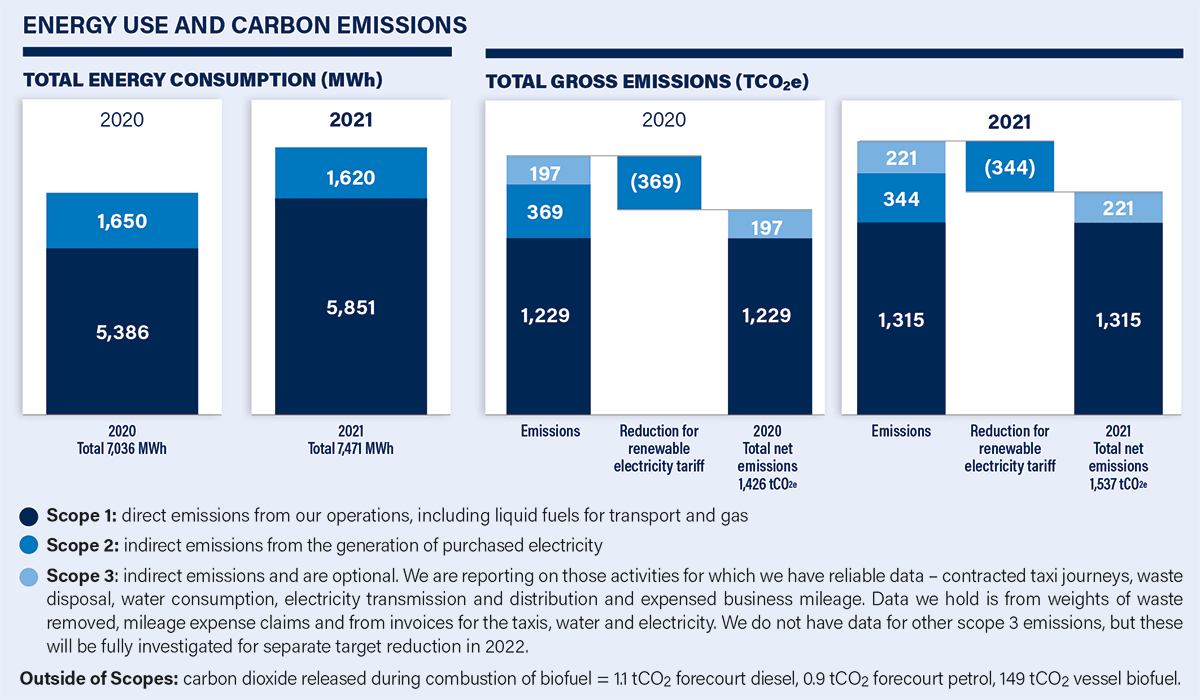
PLANNING CONSULTATION & TECHNICAL EXPERTISE
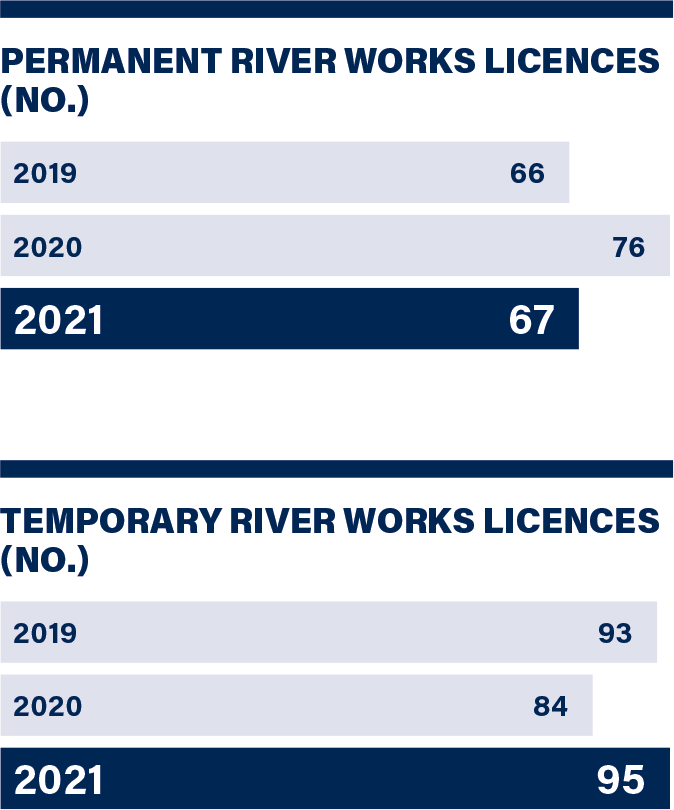
Planning and technical expertise is at the heart of our work to promote and facilitate greater use of the river. It is widely drawn on as we make sure wharves are maintained and reactivated for port use; provide expert advice to people looking to use the river, whether for trade, travel or leisure; and oversee major events on the Thames.
Through the year we determined 127 applications for consent linked to major projects covered by Development Consent Orders (DCO), including the Thames Tideway Tunnel, Forth Port’s Tilbury2 scheme, the Silvertown Tunnel and DP World London Gateway’s Berth 4. Tunnelling at Silvertown is expected to start this year.
Discussions also continued in relation to DCO applications covering the Lower Thames Crossing, OIKOS and London Resort. In addition, the team responded to some 200 planning applications and 50 policy responses in the course of the year.
The high level of major project consenting demand was met through processes originally developed to handle the consenting needs of the Tideway scheme. All applications, including those submitted at short notice during construction, were processed well within the statutory timescales allowed for in the DCOs.
The team’s technical expertise is drawn on heavily in the drive to increase use of the river for moving freight inland. Interest in using the Thames for moving light freight is at unprecedented levels.
We supported light freight operators’ immediate needs, facilitating the pilot service with CEVA and Guy’s & St Thomas' NHS Foundation Trust moving medical supplies from the PLA-owned site in Dartford to central London. Support is being provided to operators on other potential pilots and services into London.
Looking to the longer term, we partnered with the Thames Estuary Growth Board (TEGB), jointly commissioning WSP to complete a study into the economics of light freight. Subsequently we commissioned further work with Cross River Partnership and the TEGB on the adaptation of piers to accommodate the planned increased in light freight. This research included investigation and trials assessing the changes needed to accommodate cargo bikes on piers.
Progress was also made in the established, inland bulk freight markets. Consents for major river works at Plaistow and Royal Primrose wharves were granted, enabling them to return to operation. With adjacent sites, including the already operational Peruvian Wharf, they form part of a consolidated riverside industrial complex. There are live planning applications for the safeguarded Orchard and Swedish wharves. Both feature residential developments above riverside cargo operations.
There is a focus also on residential-led development applications on the Greenwich Peninsula and moving downstream into Charlton Riverside. This is an area of established major port operations, handling some two million tonnes of building materials every year, essential to the capital’s construction business. Detailed review of the proposed residential schemes has, and continues, to be undertaken with the wharf operators to ensure the long-term viability of the wharves.
The team’s engagement with Natural England on the completion of the England Coast Path between Grain and Woolwich supported the project to successful conclusion. This was officially marked at an event with the chief executive of Natural England and project partners at Woolwich Arsenal in January 2022.
The Marine Management Organisation’s consultation on our application for a Harbour Revision Order (HRO) was completed during the year. We are seeking the HRO to modernise the Port of London Act, under which we operate, to reflect modern approaches and improved transparency to consenting, operations and technology in use on the river. Since completion of the consultation, we have been meeting stakeholders to discuss points raised.
The number of Thames foreshore permits being sought reached record levels, with 1,751 permits issued, up from 1,363 in 2020. We continue to provide guidance on the need for appropriate searching of the foreshore and how to stay safe.
BRINGING PEOPLE TOGETHER AND PROMOTING THE RIVER
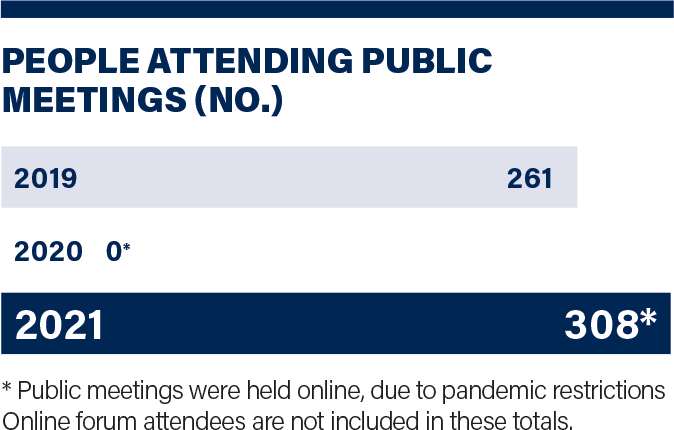
The river is a hub of activity, whether for trade, travel and sports, and a catalyst for investment. At the PLA we are uniquely placed to act as the river’s advocate and convener for those interested in its use and development. This role sees us initiating new partnerships, working to develop established ones and showcasing the river in its broadest sense.
The intensified frequency of communications established in 2020 continued through 2021. We issued our newsletter weekly, Tidal Thames News, keeping customers and stakeholders informed about the latest development in the port and on the river. Through the year the online events we hosted, including our annual stakeholder forum, environment conference and webinars looking at river developments attracted more than 1,500 delegates.
Development of an updated Thames Vision was a major focus through 2021. Some five years on from the launch of the original Vision, much progress had been made and there had been significant change at global, national and local level.
We took the opportunity to take expert views on major change across the Net Zero transition, climate change, emerging port and ship technology and river cities in a post-pandemic world. Through an initial engagement with stakeholders, supported by webinars and a drop in session, we drew people together to debate the future challenges and opportunities for the UK’s major port and busiest inland waterway.
Emerging from this debate and study was a new Thames Vision 2050, which was launched for a two-month consultation on 1 March 2022. It captures the aspirations for the Thames as trading hub, destination and natural haven. To make the most of its potential, actions were identified touching on safety, the Net Zero transition, resilience, technological change and access & inclusion.
Successful delivery of the Vision will depend on close collaboration with our customers, river users and key stakeholders. Through 2021 we continued to work closely with partners including the Greater London Authority, Transport for London, Thames Estuary Growth Board, City of London Corporation, Environment Agency and many others. Joint projects were undertaken around light freight on the river with the Growth Board and the TE2100 project, with the Environment Agency.
The annual Thames and London Waterways Forum (TLWF) event was held for the first time in two years in November 2021. This provided opportunity for the stakeholder community to come together, in our first hybrid in person and online event, to reflect on the impact of COVID, alongside planned long-term river developments.
The major exhibition we supported at the Museum of London Docklands, London: Port City, was a significant commitment to showcase the key role the port and river plays in the city, today and through history. We invested some £350,000 in the exhibition over three years.
The development of the Active Thames programme is a major piece of collaborative work taken forward over the last two years. Active Thames is a partnership supporting the development of watersports on the tidal Thames and inland waterways in London, Kent and Essex.
Organisations working together in Active Thames include: Active Essex, Kent Sport, London Sport, British Canoeing, British Rowing, RYA, Canal & River Trust, Thames Path National Trail and the PLA. At the end of the year the first grants giving programme saw funding valued at £95,000 released to support 24 projects supporting diversity and participation in watersports.
We continue to convene partners in collaborative forums. The TLWF’s People and Places Working Group, hosted by the PLA, co-ordinates and facilitates joint working on cultural and promotional activities drawing people to the river. The Port of London Infrastructure Group is the forum for major terminal operators to update on their activities as well as hear from and put issues to politicians, Government officials and those involved in the planning and delivery of major infrastructure projects.
PLA IN THE COMMUNITY
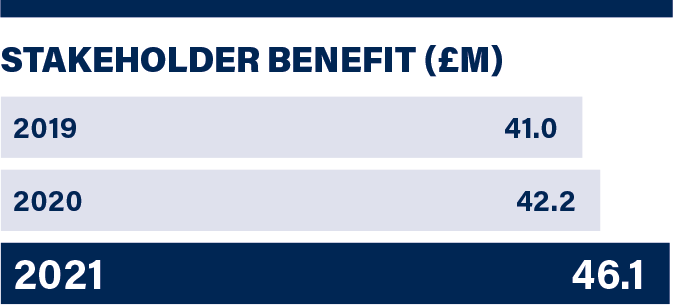
As a Trust Port, we look after the river for the benefit of many stakeholders and, ultimately, future generations.
We are active members of the river and wider communities, generating benefits well beyond those of our core operations. Activity on the river generates Gross Value Added of more than £6 billion annually and supports in excess of 140,000 jobs across port and other operations, tourism and recreation.
Through payments including wages, taxes, supplies bought in and charitable donations our operations generate substantial stakeholder benefits. We calculate this totalled £46.1 million in 2021 (2020: £42.2 million).
Our support for activities, projects and partnerships that directly support charitable and stakeholder goals rose to £0.5 million in 2021 (£0.3 million in 2020).
Our principal community outreach activity was the six-month London: Port City exhibition that opened at the Museum of London Docklands in October 2021. Founded on artefacts from our extensive archive, which is held and curated at the Museum, the exhibition showcased previously unseen gems, giving an insight into the the history of the Thames and the PLA’s role.
We also supported the visit of the British Antarctic Survey (BAS) vessel, RRS Sir David Attenborough. The vessel made a special visit to London, as part of a festival of polar science and exploration hosted by Royal Museums Greenwich and BAS, staged on the eve of COP26 in Glasgow.
The Active Thames partnership developed further through 2021. By the end of the year the partners had made of grants worth some £95,000 to organisations along the river, to support increased access to and participation in sports.
Our Environment Fund made grants to five organisations to support projects targeting Invasive Non-Native Species (INNS) and Litter. A total of £25,000 was made available, with no single project receiving more than £5,000. Organisations securing grants included Dartford & Crayford Creek Restoration Trust and AHOY Litter Pickers.
A major donation of £100,000 was made to Gravesend Rowing Club, to enable them to facilitate greater community access and as the start of a partnership with the PLA Rowing team, which will now be based there.
Thames Explorer Trust (TET) restarted their programme of schools outreach, as COVID restrictions began to ease towards the end of the summer. We have partnered with TET for more than a decade in a programme which brings memorable learning experiences that meet core objectives of the Key Stage 2 Geography and History curriculums, but also key Citizenship learning goals. In that time the programme has reached more than 20,000 young people.
Queen Victoria Seaman’s Rest, who run the Tilbury Seafarers Centre are important partners to the PLA, ensuring seafarers a warm welcome when in port. As part of the COVID response, they oversaw the vaccination of more than 600 seafarers visiting the Port of London in one month alone. A PLA team also visited the Centre and wrapped more than 300 presents for seafarers who would be in the port over the Christmas period.
Our partners at Thames Festival Trust celebrated their 25-year anniversary in 2021, with an event at the Guildhall in the City of London. The Thames Festival launched in 1997 with a record-breaking high wire walk across the River Thames. They now deliver the month-long Totally Thames event every September, celebrating the river and helping more people discover it.
Smaller donations included contributions to Old Gravesendians Rugby Football Club and Mark Ashley-Miller’s Harbour Master Sailing Challenge in aid of the Seafarer’s Charity; Mark’s challenge, started in 2019 aiming to meet all of the UK’s harbour masters.
PLA PEOPLE
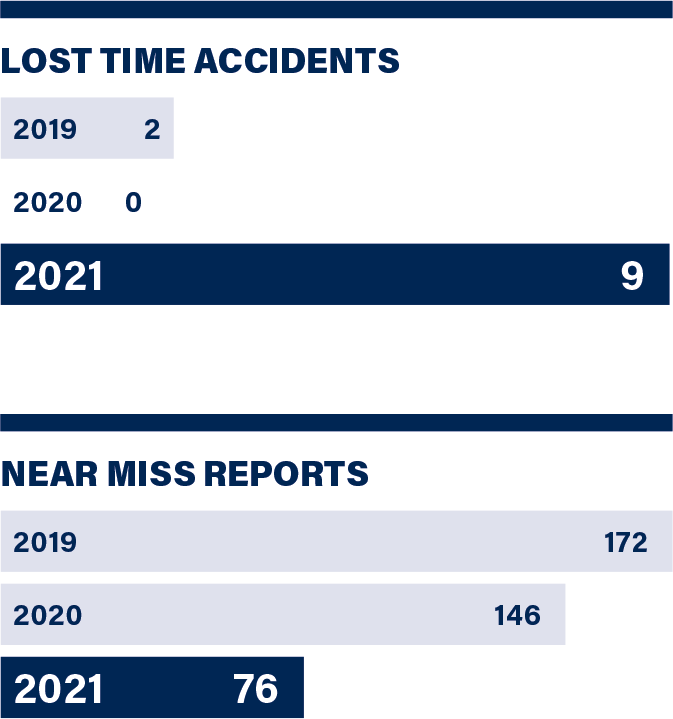
The PLA team of more than 400 people provides a rare blend of seafaring and marine expertise, complemented by specialist electrical and marine engineers, planners, civil engineers, hydrographers, environmental and many other experts.
In combination this group supports the 24 hour a day operations in the UK’s largest port and busiest inland waterway. They work closely with myriad stakeholders to support diverse uses of the river.
Providing a COVID-secure environment remained a major priority for the business. Our operations are a key part of supply chains serving businesses and families across London and the south east. The teams took particular precautions and worked through pinch points of staff availability to help ensure operational resilience.
The PLA is evolving to meet new challenges, in line with being the UK’s biggest port by tonnage of goods handled. Through the year 75 new employees were recruited, across a range of specialisms including IT, harbour masters, finance and hydrography the majority backfilling existing positions, or positions now requiring new skills. A further 12 pilots joined the PLA as part of this new intake, to keep pace with service demand in the port.
There were nine Lost Time Accidents in the year (2020: 0); the total number of near miss reports was 76 (down from 146 in 2020) as, for large parts of the year, we were confined to essential operations only, with fewer people on site.
As part of our work to prioritise mental health and wellbeing, we released a film on Time to Talk day, aiming to support efforts to get the nation discussing mental health, particularly important in the heart of the pandemic. The film was made in partnership with other members of the Tidal Thames Water Safety Forum (TTWSF), along with Maritime UK, and was hosted by Gary Wilmot MBE.
We track staff engagement in the business through an annual employee survey. The 2021 score was 78/100, slightly down from last year (2020: 79/100). The strengths of the organisation were found to be in a strong focus on Health and Safety, a good working environment remain stable and pride in the organisation. Most respondents are satisfied with how the PLA had handled the impact of COVID.
Our investment in new and existing employees continued through the year. Three new apprentices were recruited, one in marine engineering and two to pursue Boatmasters qualifications; in addition, we have a further two existing deckhands now upskilling as Boatmasters apprentices.
Two of our former apprentices won awards during the year. Clemence Barbey was named Apprentice of the Year by the Marine Society and Scarlett Barnett Smith was industry apprentice of the year for the Workboat Association. Clemence remains with the PLA, Scarlett is on a cadetship programme with Trinity House, supported by the PLA.
Upskilling of existing employees is a focus for major effort and investment. After a programme of mapping job descriptions and skills, we are supporting employees to train and secure qualifications.
In addition to apprenticeships and upskilling, we have been active supporters of the Government’s Kickstart scheme, which aimed to help unemployed young people into work through the pandemic. As the scheme draws to a close, we have hosted a total of 15 Kickstarters, with three transitioning to fixed-term contract employment in the business.
Our work with both apprentices and graduates saw us recognised as a Top 100 UK employer in the JobCrowd 2020/2021 survey.
We actively support employee fund raising and volunteering. Funds raised in Macmillan coffee mornings were matched pound-for-pound, as were sporting endeavours, including for the AHOY Centre and Cancer Research UK. The Denton clean up took place in September, with the team of staff volunteers tackling rubbish on the foreshore, ahead of the annual Thames Fishing Experiment, run by the Corporation of London Port Health department.
PLA ACTIVITY INDICATORS
As at 31 December 2021
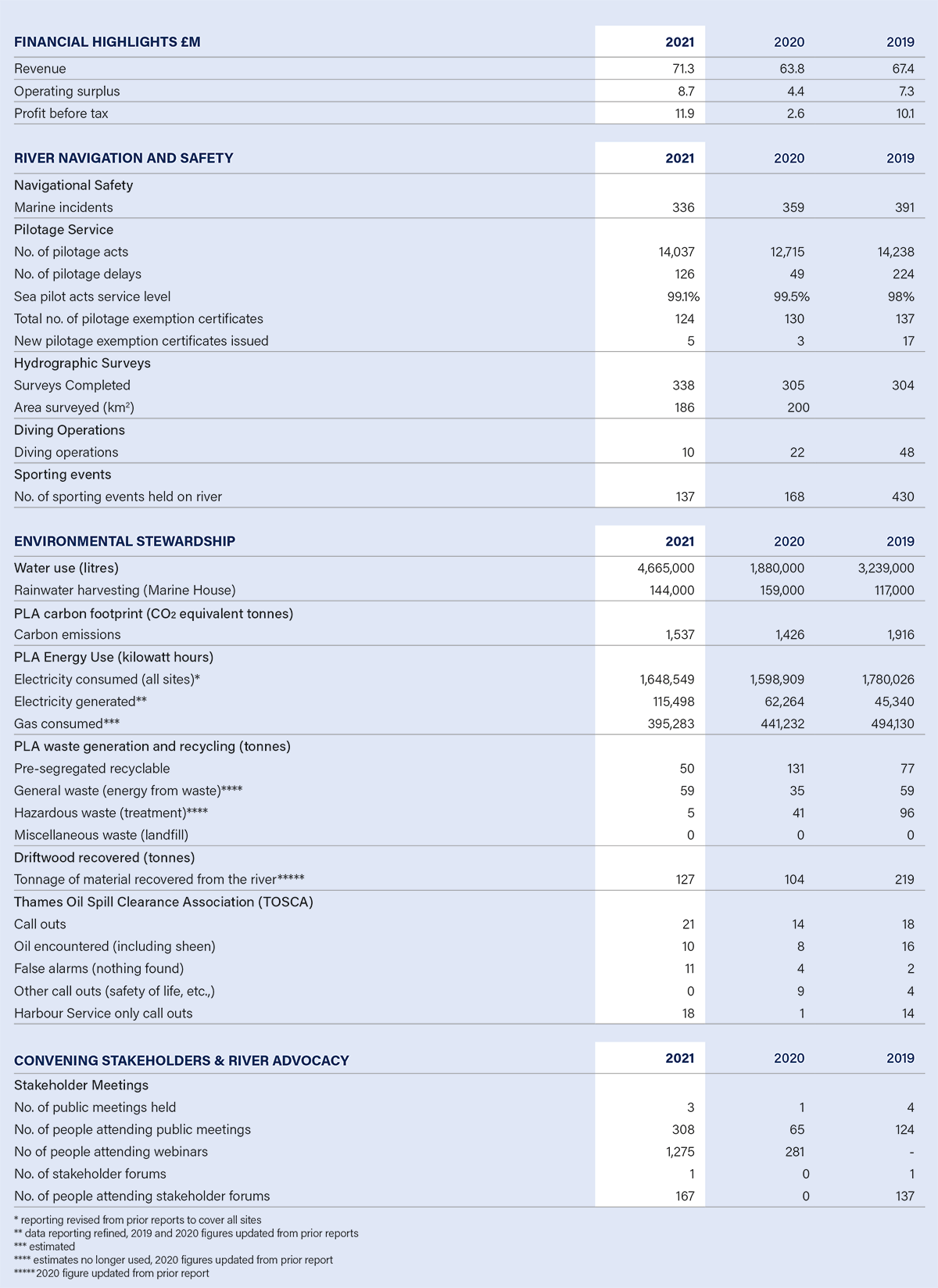
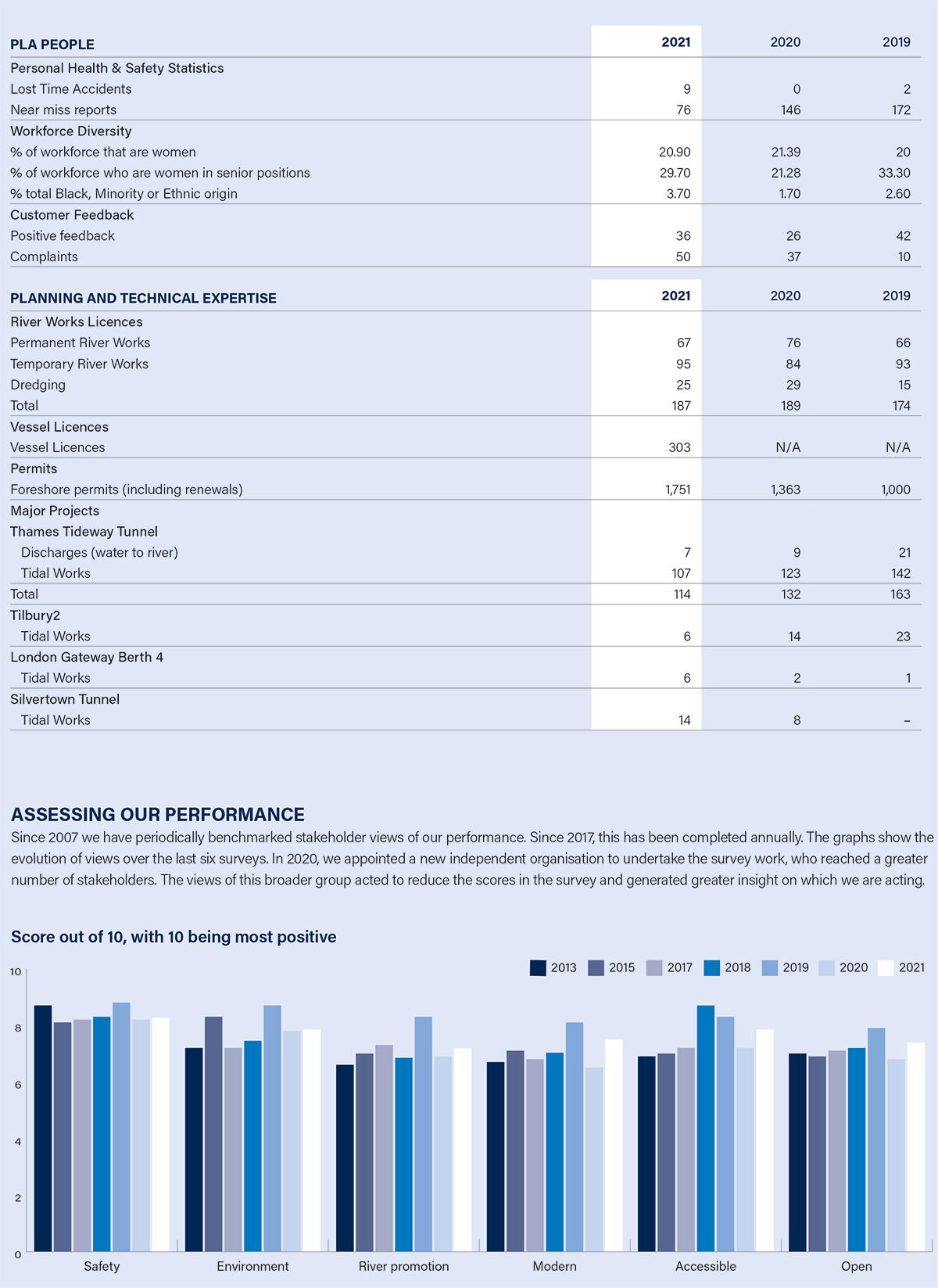
PORT TRADE STATISTICS
As at 31 December 2021
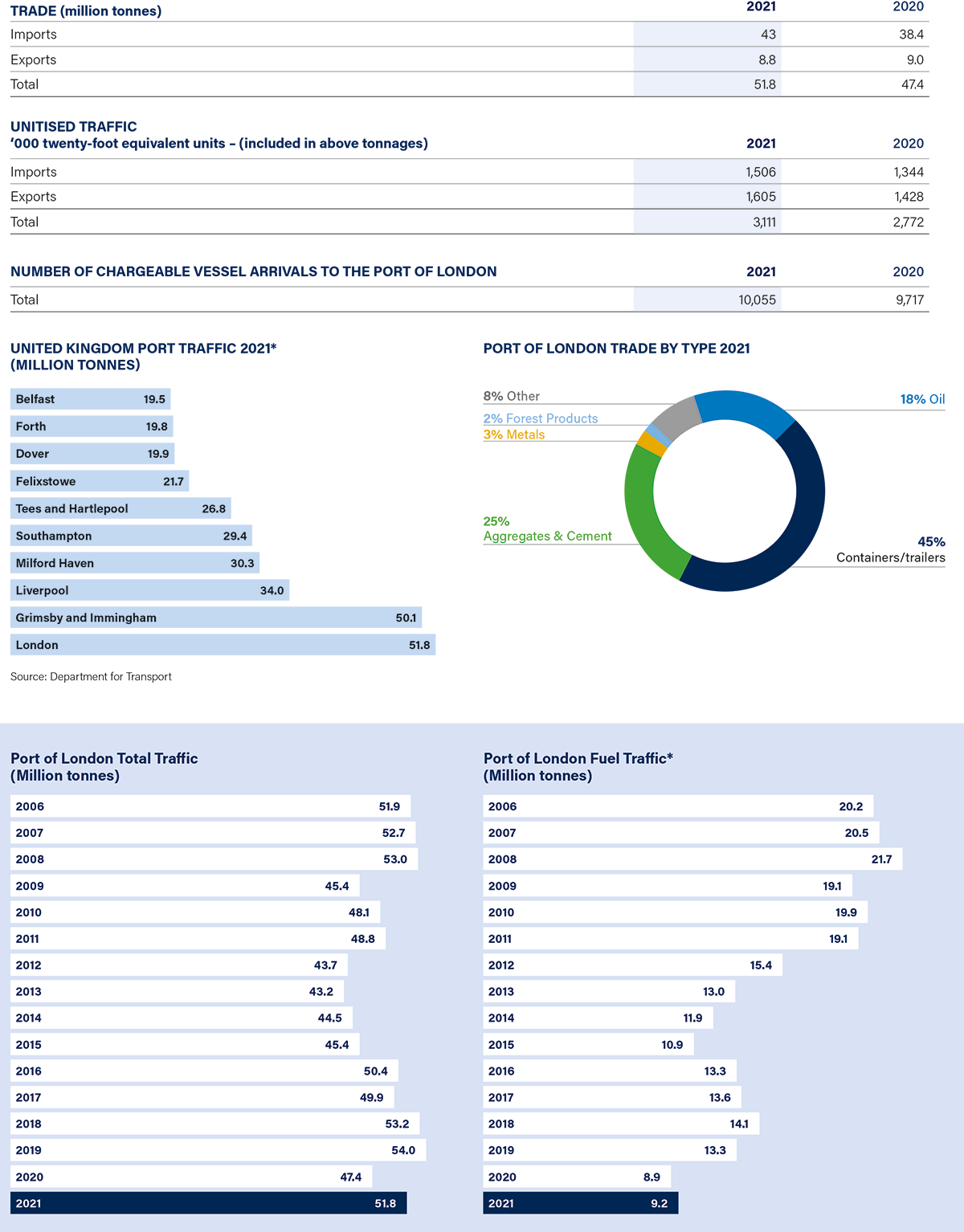
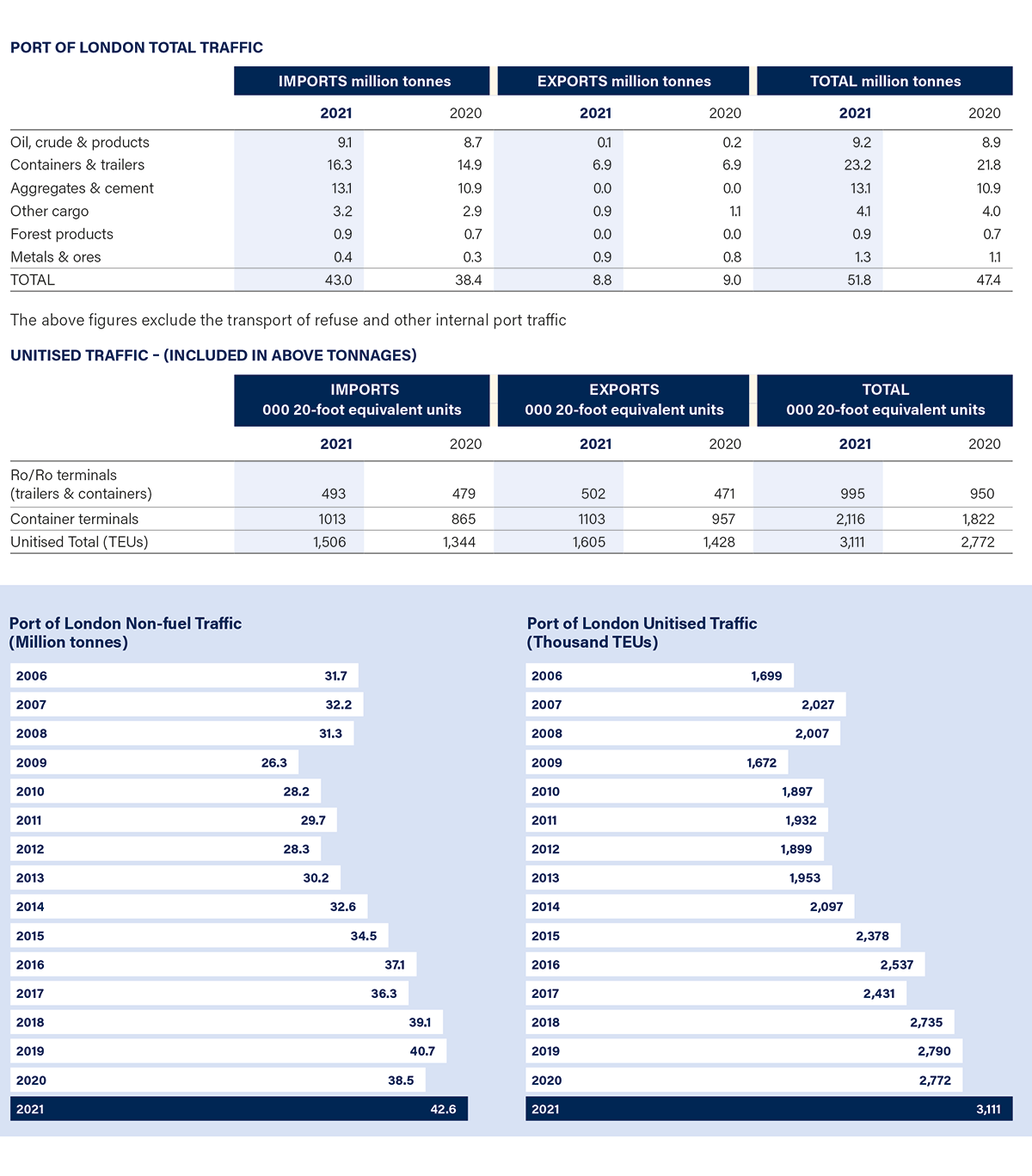
REVIEW OF PRINCIPAL RISKS
This statement captures the collective view of the Board and Executive Committee of the principal risks that the PLA works to manage.
The key risks have a broad spread across safety, operational, economic aspects, coronavirus measures, cyber security and climate change. Reputational risk is not given a separate listing; it is inherent in failing adequately to deal with the key risks identified here.
CORONAVIRUS
The outbreak of the coronavirus and future variants is still a significant risk for the PLA. The potential impact runs across the business, from personal health & safety to operational resilience as well as the viability of some of our customers and therefore the potential long-term impact on our financial performance.
Mitigating steps include heightened health and safety measures to help prevent the spread of the disease and working with customers to offer some financial support where appropriate. We have looked at the financial resilience of our business and have put in place measures to monitor and mitigate the risks as they are developing.
SAFETY
Numerous mitigation systems are in place on the river, including an effective navigational Safety Management System (SMS), risk assessment/hazard reviews, Vessel Traffic Services (VTS), pilotage, hydrography, local regulations and codes of practice, Automatic Identification System (AIS), RNLI and London Coastguard, special signal lights and speed control byelaws. The PLA also hosts safety orientated initiatives, such as seminars and works closely with security services.
In the context of growing volumes of river traffic, the continued trading of historic passenger boats, with the risk of significant loss of life if one of these vessels was involved in a collision and foundered, remains a major concern. We strongly endorsed the Maritime & Coastguard Agency (MCA) consultation and support proposals to amend the technical requirements for older Domestic Passenger Vessels to be more comparable with modern regulations. Whilst recognising there has been a consultation by the MCA and proposed Regulations by Department for Transport these have not yet been enacted, so the risk hasn't reduced.
Personal health & safety is a priority in the business, managed through personal responsibility, our Golden Rules – Care, Challenge and Comply – and our safety management system.
OPERATIONAL
The most significant operational risk to the PLA would be the closure or partial closure of the port, significantly disrupting or halting operations and trade. There are a number of possible causes including, but not limited, to:
- collision;
- grounding;
- foundering;
- deliberate terrorist / pressure group action; and
- significant cyber security incident.
Mitigations include effective navigational SMS, risk assessment/hazard review, VTS, pilotage, hydrography and emergency planning. Historically, the PLA has demonstrated an effective response to clearing navigational channels if engaged to do so; our Marine Services team and the vessel London Titan are key to this capability. In addition, we chair the Thames Port Security Authority and the Thames Resilience Panel, respectively.
ECONOMIC
A fundamental shift in the micro or macro financial environment in which the PLA operates has the greatest potential to impact the Port of London in general and the PLA’s finances in particular. This includes anything from a global pandemic, as we have experienced during 2020 and 2021, war as we are currently seeing between Russia and Ukraine, as well as changes in trade such as business cessation of a major customer or change in the consumer market, through to national or international economic factors such as a change in global trading patterns, or the impact of climate change.
The organisation is sufficiently agile to react to changes and our communication channels help to anticipate any such change in sufficient time to react accordingly by making a corresponding shift in our cost base. Debt management protocols are in place and international exposure is minimised as far as is possible. Five-year business plans, as well as an annual forecast and budget exercise, are undertaken.
FINANCIAL
Coronavirus has presented a challenge to all businesses; this has tested both our resilience and our ability to react quickly. In 2021 the business environment improved significantly, and the severity of financial challenge consequently reduced. We have prepared detailed sensitivity analysis and financial scenarios looking at the potential impact on our cashflow, extending out to the next 12 months as well as the preparation of a five-year business plan to assess the long-term use of available resources.
We have continued to review and implement bad debt strategies. There continues to be a substantial deficit on an actuarial basis on the PLA Pension Fund of £48 million. Updated actuarial assumptions have increased this deficit; we are currently in the middle of the triennial valuation of the scheme. In January 2021, the PLA launched a new Defined Contribution scheme which replaced the Defined Benefit scheme for new employees.
The Pilots National Pension Fund, a multi-employer scheme, also has a substantial deficit in which the PLA has a share, in the region of 6.8%. It is a long-term open-ended industry-wide liability over which individual employers have little influence. An industry-wide repair plan is in place which, in common with many ports, is funded by way of a levy on pilotage charges.
SIGNIFICANT CYBER SECURITY INCIDENT
All businesses face the possibility of a successful cyber security breach. Threats vary in complexity and sophistication and can potentially negatively impact organisations of all sizes. We deploy a range of industry-standard security products, both internally and on our network perimeters. Formal security and IT ‘conditions of use’ policies are established, which define security standards and acceptable use.
FOffice-based staff receive security awareness training and guidance on detecting ‘phishing’ and other malicious emails, and we continue to enhance data governance processes including formalised data retention and classification policies. We further increased our cyber security measures in 2021.
CLIMATE CHANGE
Climate change is a subject with which we have been engaged for a number of years. It is now viewed as one of the principal risks to which the PLA has to respond. As a port handling more than 10 million tonnes of cargo, we completed a risk assessment and submitted our first Climate Change Adaptation Report to Defra under the Climate Change Act in 2011, with the risk assessment updated and a second, voluntary, Adaptation Report submitted in 2015. It was updated again – in the light of subsequent experience and using the most recent climate change forecasts (UKCP18) – for the third voluntary report, which was submitted in early 2021 and subsequently acknowledged by Defra.
In responding to climate change, the UK Government has made a legally binding commitment to achieving a Net Zero Carbon economy by 2050. This will result in wholesale change across the economy, and the ports that serve it. For the PLA major changes that are likely, or potentially likely, to result include: the long-term reduction in tonnages of oil related cargoes (currently representing around a quarter of port trade and a major source of income); development of new cargoes; existing vessels’ propulsion systems becoming obsolete; need to adopt new technologies; dealing with unforeseen legislative changes; and managing the impact of extreme weather on the business.
In managing this risk, the PLA has established a major project and subsequently started implementing a programme committing the PLA to be Net Zero by 2040 and continuing work on reviewing the Thames Vision to 2050, incorporating themes of decarbonisation, patterns of resilience and developments in vessel autonomy. Underpinning this review is work commissioned from Oxford Economics, forecasting cargo flows into the Port of London, assuming various decarbonisation scenarios.
THAMES VISION
The development of Thames Vision 2050 is a major undertaking by the PLA, drawing together stakeholder views in a long-term river development framework. The Vision consultation draft features some 40 proposed actions needed to progress towards the long-term goals between now and the middle of the century. Only a few of the actions are solely for the PLA. Securing and maintaining stakeholders’ commitment to joint or sole ownership of actions will be critical to the success of the initiative. Engagement and consultation processes are in hand to secure this.
LONG-TERM VIABILITY STATEMENT
The Board has assessed the viability of the company over a five-year time horizon to December 2026, taking account of the company’s current position and potential impact of the principal risks documented in the corporate risk register.
The Board was presented with a long-term view of the business over the next five years looking at the volume of trade and the types of cargo. They have reflected on the impact that coronavirus had on the business and how the organisation was able to react. The Board has assessed the sensitivity of the business plan by looking at scenarios of how the business would perform if trade was reduced, improving operational resilience through a change in working practices and investment in technology to ensure IT systems are resilient and secure.
The Board has a reasonable expectation that the company will be able to continue in operation and meet its liabilities as they fall due over the period to December 2026.
The Board was presented with a long-term view of the business and in the near term, assessed the level of business disruption and the sensitivity of trading numbers by preparing a cashflow analysis over the period to 31 December 2022 for scenarios of 10%, 15% and 20% reductions in income.
In making this statement, the Board has considered the resilience of the company, taking account of its current position, the principal risks facing the business in severe, but realistic scenarios and the effectiveness of any mitigating actions. This assessment has considered the potential impacts of these risks on the business model, future performance, solvency and liquidity over the period.
GOVERNANCE
CORPORATE GOVERNANCE REPORT
OUR YEAR
During 2021, the Board focussed the organisation on the following priority areas: health and safety, Thames Vision, investment, PLA pension fund and charges.
The Board met nine times in total. Due to coronavirus restrictions, the majority of these took place via video conference:
- six Board meetings (four via video conference)
- one Away Day
- one video conference to review and approve the 2022 budget
- one special Board update (via video conference) to discuss the PLA’s response to coronavirus
The substantive items we addressed together at the Board included:
- Coronavirus response
- Thames Vision 2050 development
- Hammersmith Bridge
- Amendment to the Thames Byelaws
- Hydrogen economy
- Risk
- Sub-stations on the Thames
- Gravesend Redevelopment Part 2
- 2022 budget, capital and five-year plan
- Cyber security
- Stakeholder audit
- Annual objectives 2022
OUR APPROACH
The PLA Board is the duty holder on health and safety and the accountable body for navigational safety under the Port Marine Safety Code (PMSC). Performance is reviewed regularly, with the guidance of our independent designated person, in order to ensure compliance.
The Board’s role is to set the strategy for the PLA, ensure its long-term success and create stakeholder value. In particular we have a duty to manage the tidal River Thames in trust for future generations and to pass it on to our successors in an improved condition. As a provider of essential navigational safety services, we have to ensure that the organisation is efficient and provides customers with cost-effective services. With no shareholders, we are accountable to stakeholders and value their input in shaping the approach and decisions that we take.
We are committed to maintaining the highest standards of corporate governance and follow the Ports Good Governance Guidance and the UK Corporate Governance Code (where appropriate for a statutory organisation).
As the Board, we regularly receive detailed financial and operational information to allow us to monitor the key areas of the business. Senior managers regularly brief us on various aspects of the PLA’s work.
OUR GOVERNANCE STRUCTURE
Seven scheduled Board meetings (including one virtual away day) were held during the year. In addition, the six committees of the Board overseeing specific elements of the business met and reported back, as needed. The committees are:
A Audit Committee
L Licensing Committee
N Nominations Committee
R Remuneration Committee
P Pensions Advisory Committee
I Investment Committee
T Thames Vision Committee
Jump to a series of short reports on each of the committees.
OUR PEOPLE
The Board is made up of a chair, together with seven non-executive and three executive members.
OUR STAKEHOLDERS
Open communication with our stakeholder community is at the heart of our operations. Consistent with Ports Good Governance Guidance, we hold an Annual Stakeholder Forum, where stakeholders have an opportunity to meet, hear from and challenge the Executive and Board. A number of open Public Meetings and River User Consultative Forums are held, giving stakeholders further opportunity for dialogue with the PLA.
OUR APPROACH TO RISK
We adopt a prudent approach to the management of risk in the business. This is consistent with our prime role, providing an essential safety service to our customers. We are also a commercial organisation and accept some level of risk as a normal consequence of doing business. More details of our approach to risk identification and management can be found on page 40.
BOARD EFFECTIVENESS REVIEW
During December 2021/January 2022, an internal Board evaluation was undertaken as part of the Board’s review cycle.
We welcome any feedback you may have on this Annual Report – please use this form to send your comments.
Christopher Rodrigues CBE
Chairman
9 April 2021
BOARD MEMBERS
As at 30 March 2021
| NON-EXECUTIVE MEMBERS | |||
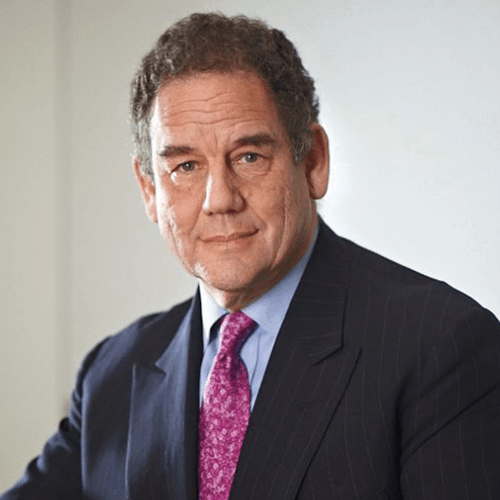 |  | 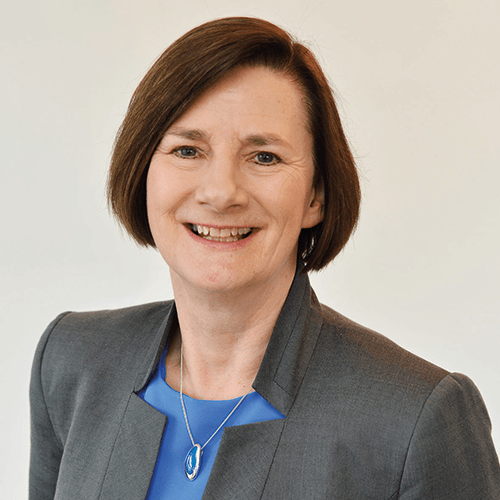 | 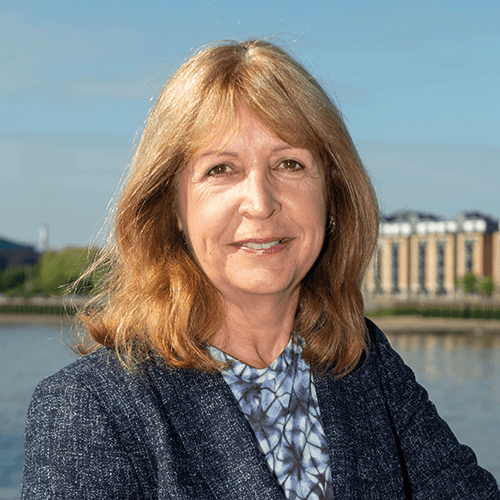 |
| Christopher Rodrigues CBE (DfT) | Alun Griffiths (PLA) | Judith Armitt (DfT) | Paula Carter (PLA) |
| Chairman | Vice Chairman | Non-Executive Director | Non-Executive Director |
| Qualifications: MA Cambridge, MBA Harvard, D Univ Surrey | Qualifications: BSc(Hons) Applied Economics | Qualifications: MA Philosophy, Politics and Economics, Chartered Institute of Public Finance and Accountancy (CCAB qualified) | Qualifications: MA Oxon, JP |
| Appointed: January 2016 | Appointed: September 2014 | Appointed: December 2016 | Appointed: June 2018 |
| Committee membership: P (Chair), N, R | Committee membership: L (Chair), R (Chair) | Committee membership: A (Chair), P, I | Committee membership: A |
Christopher Rodrigues CBE became chair of the Port of London Authority in January 2016, chair of the Royal Ballet School in January 2020 and chair of the Maritime & Coastguard Agency in April 2021. In May 2018 he became an ambassador for the World Travel and Tourism Council (WTTC), and in January 2019 council member and chair of the Development Committee at University College School, Hampstead. Christopher was chair of Openwork from January 2014 – June 2020; chair of the British Council from 2016 – 2019; chair of the British Bobsleigh and Skeleton Association from 2013 – 2019; chair of VisitBritain from 2007 – 2017; chair of International Personal Finance and Windsor Leadership from 2007 – 2015; chair of The Almeida Theatre from 2008 – 2016. Christopher was a council member of the National Trust from 1997 – 2004, and again from 2010 – 2012, and a Trustee from 2012 – 2016. He was on the Executive Committee of WTTC from 2007 – 2016. Christopher is a graduate of Cambridge University (MA) and the Harvard Business School (MBA, Baker Scholar). He was awarded an honorary degree of Doctor of the University of Surrey (DUniv) in April 2013. He rowed for Cambridge in the 1970 and 1971 Boat Races, is a past-chair of Leander Club and is a steward of Henley Royal Regatta. Christopher was made a Commander of the British Empire in the 2007 New Year Honours list for services to British business interests and charitable works in the UK and USA. | Alun Griffiths joined the PLA on 1 September 2014 and was appointed deputy chair in 2018. Alun retired from the board of WS Atkins plc in 2014 and now sits on a number of boards as a non-executive director. His portfolio currently includes Severfield plc (the UK’s largest steelwork fabricator) where he is senior independent director and chair of the Remuneration Committee and Ramboll AS (an international engineering consultant headquartered in Copenhagen) where he is member of the board, chair of the Transaction Committee (overseeing M+A and major bids) and a member of the Remuneration Committee. During his Atkins career, he worked in the UK and internationally in a variety of management consulting, business and corporate roles before becoming Group HR Director, joining the board in 2007. Alun is a fellow of the Chartered Institute of Personnel and Development. From 2014-2021 he was a board member and chair of the Remuneration Committee for the Anchor Hanover Group (the largest provider of housing and care to the elderly in England). He has worked extensively across the science and engineering sectors to improve gender diversity at all levels up to and including the boardroom. | Judith Armitt was appointed a non-executive member of the Port of London Authority on 1 December 2016. She retired as chief executive of Local Partnerships LLP in April 2016. Prior to this she worked in the Cabinet Office, was managing director of Ashford’s Future Company, Thames Gateway chief executive and chief executive of Medway Council. Judith is a trustee of the Centre for Engineering and Manufacturing Excellence (CEME), Design: South East, and Pro-chancellor of Canterbury Christ Church University. | Paula Carter joined the PLA as a non-executive director on 1 June 2018. She worked for 30 years in broadcasting, most recently as director of planning and board secretary at Channel 4 where she was responsible for all corporate planning. Before joining Channel 4 in 2007 she held senior policy and management roles at the BBC and ITV and worked as an advisor to various government departments, regulators and agencies on communications matters, including the joint Parliamentary committee that scrutinised the Communications Bill in 2002. Before joining the BBC in 1989 she worked in advertising in the UK and New Zealand. Paula is a non-executive director of the productivity movement Be the Business, a magistrate on the South East London Bench, chair of Ofcom’s Advisory Committee for England and a non-executive director of the Rugby Football Union. She sits on the disciplinary panel for the Lawn Tennis Association. |
| NON-EXECUTIVE MEMBERS | |||
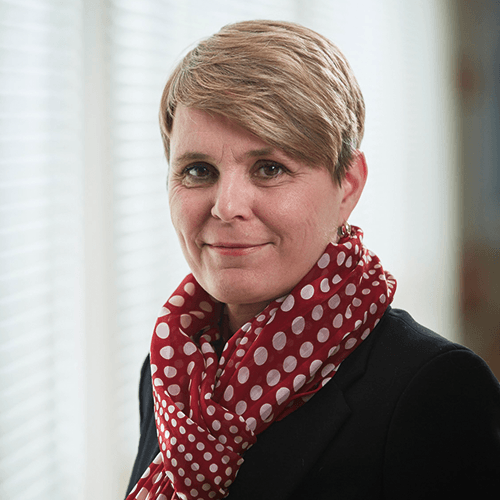 |  |  | 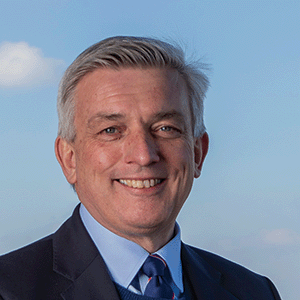 |
| Toril Eidesvik (DfT) | Darren James (PLA) | Sue Mackenzie (PLA) | Admiral Sir Philip Jones GCB DL (DfT) |
| Non-Executive Director | Non-Executive Director | Non-Executive Director | Non-Executive Director |
| Qualifications: MA Law | Qualifications: B Eng(Hons) Civil Engineering; C Eng Chartered Engineer, Member of the Engineering Council, Fellow of the Institution of Civil Engineers, Fellow of the Chartered Institution of Highways and Transportation, Fellow of the Institute of Directors | Qualifications: BSc (Hons) Agricultural Science (Animal), MSc Emergency Planning Management | Qualifications: Qualifications: BA(Hons), MA (Geography), Mansfield, College, Oxford, Higher Command and Staff Course, Graduate, Joint Service Defence College |
| Appointed: September 2020 | Appointed: December 2016 | Appointed: January 2021 | Appointed: March 2022 |
| Committee membership: R, P | Committee membership: I (Chair), L, P | Committee membership: A | Committee membership: L, P |
Toril Eidesvik was appointed as a non-executive member of the PLA Board on 1 September 2020. She has worked within the shipping industry in various positions since 2006 where she was elected executive chair of the reefer shipping company Green Reefers. She later served as CEO from 2008 to 2012. Toril served as CEO for the general ship supply company Seven Seas and more recently for the cargo handling equipment supplier TTS Group (now Nekkar). Toril has extensive board experience from several shipping related companies and is presently a board member of Solstad Offshore and Eksportfinans, Chair of Munck Cranes and non-executive director of Edda Wind ASA. She holds a Master of Law from the University of Oslo, worked as a lawyer for the first nine years of her career, firstly within a private law firm and later within the legal department of a bank. | Darren James joined the PLA Board in December 2016. A chartered civil engineer, Darren graduated with honours from the University of Surrey in 1990. He was appointed chief executive officer at Keltbray in early 2020, having spent the majority of his career at Costain. He came through the graduate programme at Costain as a civil engineer, project management on some of the UK’s largest infrastructure programmes to become managing director of their Infrastructure Division. Darren sits on the Prince’s Trust Leadership Group, championing the entry of young people into the industry and is a director of the Rail Industry Association. | Sue Mackenzie was appointed as a non-executive member of the PLA Board on 1 January 2021 Sue brings a wealth of international, commercial shipping operational experience, having served in senior management and advisory roles for both public and private companies for more than 20 years. She held a variety of roles during nearly 13 years at P&O Ferries most recently as operations and business transformation director. Prior to that she was operations director of London Luton Airport at a time of unprecedented growth following the launch of easyJet. Sue’s early career was spent in military service and not-for-profit sectors both within and outside the UK. After leaving the Army, Sue spent time as chief executive of the charity Cities in Schools, which ran partnership programmes between business and the community to provide education, training and support to disadvantaged young people. Sue currently serves as a non-executive director of BMT Group Ltd and Medway NHS Foundation Trust and is also on the board of Logistics UK. She has degrees in Agricultural Science and Emergency Planning Management and has completed the General Management Programme at Harvard Business School. Sue continues to work voluntarily in support of her fellow servicemen and women and is involved as a trustee and / or volunteer of several charities in the UK. | Admiral Sir Philip Jones joined the PLA board as marine non-executive member at the start of March 2022. Sir Philip served as chief of naval staff and First Sea Lord, the professional head of the Royal Navy, from 2016-19. He joined the Royal Navy in 1978, read for a degree in Geography at the University of Oxford, saw active service in the South Atlantic in 1982, qualified as a surface warfare officer, and served in HM Yacht Britannia. His sea commands included the Type 22 frigates HMS Beaver (as a Commander), and HMS Coventry (as a Captain), the UK’s Amphibious Task Group (as a Commodore), UK Maritime Forces and EU Naval Forces for Counter Piracy off Somalia (as a Rear Admiral), and the Fleet (as a Vice Admiral). He also served four times in the Ministry of Defence. Sir Philip is the military advisor for BAE Systems’ Global Combat Ship programme, a Trustee of the Royal United Services Institute for Defence and Security Studies and chair of Trustees at the National Museum of the Royal Navy. |
| EXECUTIVE MEMBERS | |||
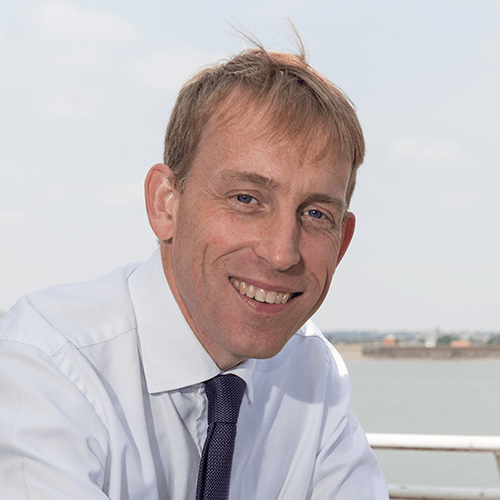 | 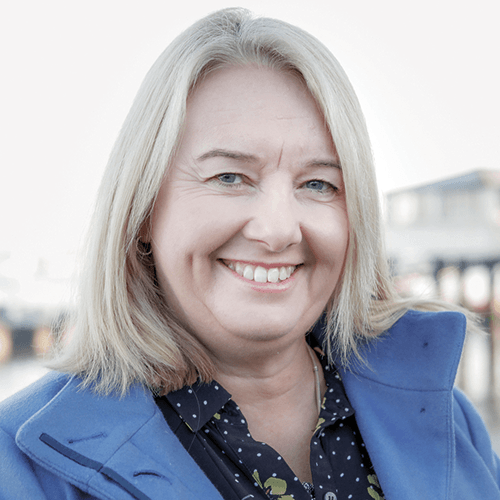 | 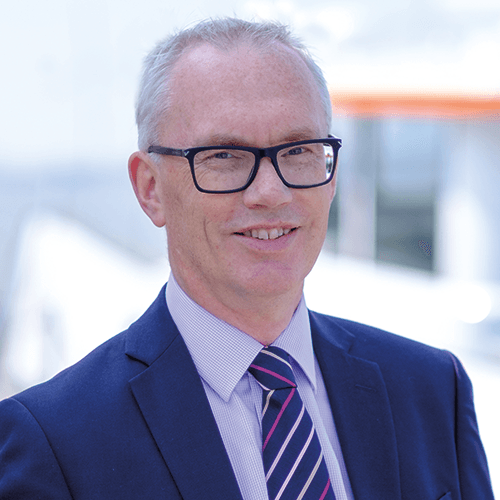 | |
| Robin Mortimer | Julie Tankard | Robert Baker | |
| Chief Executive | Chief Financial Officer | Chief Harbour Master | |
| Qualifications: BA(Hons), Modern History, Oxford MA; MSc, Development Studies, School of Oriental and African Studies | Qualifications: FCMA (Fellow Chartered Institute of Management Accountants), GCMA (Global Chartered Management Accountant) | Qualifications: MBA and Master Mariner | |
| Appointed: March 2014 | Appointed: October 2017 | Appointed: May 2016 | |
| Committee membership: L, P, I | Committee membership: | Committee membership: L | |
Robin joined the PLA as chief executive officer on 31 March 2014. Prior to joining the PLA, Robin had 20 years’ experience in the UK Government civil service across a range of Government Departments. He was private secretary to the environment secretary from 1996-97, deputy Prime Minister from 1997-98 and to the transport secretary from 2001-03. He led the work on the UK Climate Change Bill in 2006 and in 2007, became a director in Defra where he set up the UK’s Adapting to Climate Change programme, oversaw the creation of the Canal & River Trust and directed policy on air quality and the natural environment. Robin is currently the vice chair of Maritime UK, a member of the CBI’s London Council and a trustee of Thames 21. | Julie Tankard, chief financial officer was appointed in October 2017. Julie is a fellow of the Chartered Institute of Management Accountants and has over 25 years of experience in finance, primarily in IT and telecommunications. Prior to joining the PLA, Julie was a vice president at BT plc and her last role was responsible for group contract & commercial management. Prior to joining BT, Julie was the finance director for Racal Datacom and prior to that was finance director for the networking division of Unisys UK & EMEA. Julie has also been a non-executive director of a mental health trust in Leeds and York since 2013. Julie was appointed to the Industrial Development Advisory Board (IDAB) in October 2021. IDAB is a statutory body set up under the Industrial Development Act 1982 to advise the Secretary of State on large business and industrial investment and or intervention decisions being considered by the Government, focussing on value for money for the taxpayer. | Bob Baker became PLA chief harbour master in May 2016. He is responsible for all operational and navigational matters including vessel traffic management, pilotage, harbour services and port security. Bob joined the PLA from Forth Ports, where he was chief harbour master and a director of Forth Estuary Towage from 2001. Bob’s seagoing career lasted from 1975 to 1991, before he came ashore to work at the Port of Tilbury, latterly as general manager, conventional operations and harbour master. Bob chairs the UKMPG/BPA Marine Pilot Working Group, he was the UK’s representative on the Marine Affairs Committee of the European Sea Ports organisation (ESPO) and is a past president of the UK Harbour Masters Association. He holds an MBA from Henley Management College. | |
MANAGEMENT EXECUTIVE COMMITTEE
Chief Executive
Robin Mortimer
Chief Financial Officer
Julie Tankard
Chief Harbour Master
Robert Baker
Director of Corporate Affairs & Strategy
Alistair Gale
Director of Sustainable Marine Operations
Steven Clapperton (Joined October 2021)*
Director of Planning and Development
James Trimmer
Director of Human Resources
Glenn Witham
* Director of Marine Operations, Peter Steen retired from the PLA on 31 December 2021
SUMMARY STATISTICS
As at 30 March 2021
The board is made up of a chair together with seven non-executive and three executive members. There were 11 members of the PLA Board as at 30 March 2022.
Due to the COVID-19 pandemic, the majority of meetings were held via video conference. Three face to face meetings took place.
Attendance at the eight meetings of the PLA Board in 2021 (including away day and approval of the 2022 budget via video conference) was as follows:
CHRISTOPHER RODRIGUES CBE 8
ROBIN MORTIMER 7
JULIE TANKARD 8
ROBERT BAKER 8
ALUN GRIFFITHS 8
IAN MONCRIEFF CBE DL
(term expired on 21 December 2021) 7
DARREN JAMES 7
JUDITH ARMITT 8
PAULA CARTER 8
TORIL EIDESVIK 8
The following committees of the Board also met during 2020:
Audit 3
Nominations 2
Licensing 6
Pensions Advisory Committee 2
Remuneration 4
Investment 3
Thames Vision 4
Committee memberships are listed in the Board members’ biographies and in the following short reports on each committee.
COMMITTEES
As at 30 March 2021
BOARD EFFECTIVENESS REVIEW
An internal Board evaluation was undertaken during December 2020. The results and subsequent recommendations were discussed at the February 2021 Board meeting.
AUDIT COMMITTEE | A
Met three times
Current Membership
Judith Armitt (chair); Paula Carter; Sue Mackenzie
Commentary
The audit committee’s role is to:
- advise on the appointment/re-appointment/removal of auditors, their terms of engagement and their level of remuneration
- review the scope and the results of the annual audit and report to the Board on the effectiveness of the audit process
- review and recommend the annual report and accounts to the Board
- monitor the internal and external audit programme and consider the conclusions of audits undertaken
- review the effectiveness of the risk management system
- review the arrangements by which staff may, in confidence, raise concerns about possible improprieties in matters of financial reporting and other matters
- consider the bribery statement and policy as appropriate
- review the slavery and human trafficking statement and policy annually
The principal items discussed during the year were around:
- annual report and accounts
- Ernst & Young’s audit and planning report
- Estuary Services Ltd
- Willis Towers Watson report
- risk management and effectiveness review
- Gravesend accommodation
- bad debts
- Pilots National Pension Fund (PNPF)
- GDPR annual review
- whistleblowing
- legal update
- management systems review by LR
LICENSING COMMITTEE | L
Met four times
Current Membership
Alun Griffiths (chair), Robin Mortimer, Robert Baker, Ian Moncrieff, Darren James
Commentary
The licensing committee’s role is to:
- approve the processes for administration of the licensing of works
- determine any application considered contentious or significant
- determine any proposal to suspend or revoke a licence, take enforcement action or impose a condition contentious or significant
- approve the granting and appropriate terms, excluding financial, of any leases of PLA land
- approve the use of powers under the Town & Country Planning (General Permitted Development) Order
The principal items discussed during the year included:
- residential moorings
- dredging consent
- licence applications
- Hammersmith Bridge
- enforcement
- Licensing Department restructure
- IDOX
NOMINATIONS COMMITTEE | N
Met twice
Current Membership
Christopher Rodrigues (chair), Alun Griffiths, additional non-executive director, if required
Commentary
The nominations committee’s role is to:
- recommend to the Board the appointment and reappointment of non-executive directors considering the need for diversity
- advise on the expertise required when a vacancy arises
- recommend to the Board the appointment of a deputy chair
The principal items discussed during 2021 were:
- reappointment of one non-executive director
- 2022 non-executive director recruitment
- deputy chair
- board skills
- committee membership
RENUMERATION COMMITTEE | R
Met four times
Current Membership
Alun Griffiths (Chair), Christopher Rodrigues, Toril Eidesvik
Commentary
The remuneration committee’s role is to:
- consider and recommend to the Board the remuneration terms for the organisation, including executive and non-executive directors
- succession planning of directors and the senior management team
- oversight of staff development, talent management and organisation culture
The principal items discussed during the year were around:
- Executive Committee performance reviews
- 2021 objectives
- pay
- rewards
PENSIONS ADVISORY COMMITTEE | P
Met once
Current Membership
Christopher Rodrigues (chair), Darren James, Judith Armitt,
Robin Mortimer, Toril Eidesvik
Commentary
The pensions advisory committee’s role is to:
- advise the Board on the overall pension strategy
- maintain a good dialogue with pension fund trustees
- be proactive / reactive regarding investment decisions and strategy
- consider the PLA’s financial prospects and risk appetite
The principal items discussed during the year were:
- employer covenant assessment
- pension valuation
INVESTMENT COMMITTEE | I
Met four times
Current Membership
Darren James (chair), Judith Armitt, Robin Mortimer
Commentary
The investment committee’s role is to:
- review investment proposals and make recommendations to the Board
- carry out post implementation reviews
The principal items discussed during 2020 were:
- investment proposals
- Sustainable Innovation Fund
- review of investments
- acquisition of Estuary Services Ltd
- SmartDocks
- GIS-based investment opportunity heat map
THAMES VISION COMMITTEE | T
Met three times
Current Membership
Paula Carter (chair), Christopher Rodrigues, Judith Armitt, Robin Mortimer
Commentary
The Thames Vision committee’s role is to:
- review the strategic approach for delivering and measuring progress on the Thames Vision
- consider priority actions to deliver the Thames Vision linking to the PLA’s business plan
- review progress and action on Vision goals
The principal items discussed during the year included:
- 2021 goals
- 2021 action plan
- Thames Vision refresh
- priority actions
- Museum of London exhibition
- Trade and Economic Forecast Study (Oxford Economics)
FINANCIAL STATEMENTS
Financial data for the year ended 31 December 2021 are available in PDF format here.
Related content
Discover

